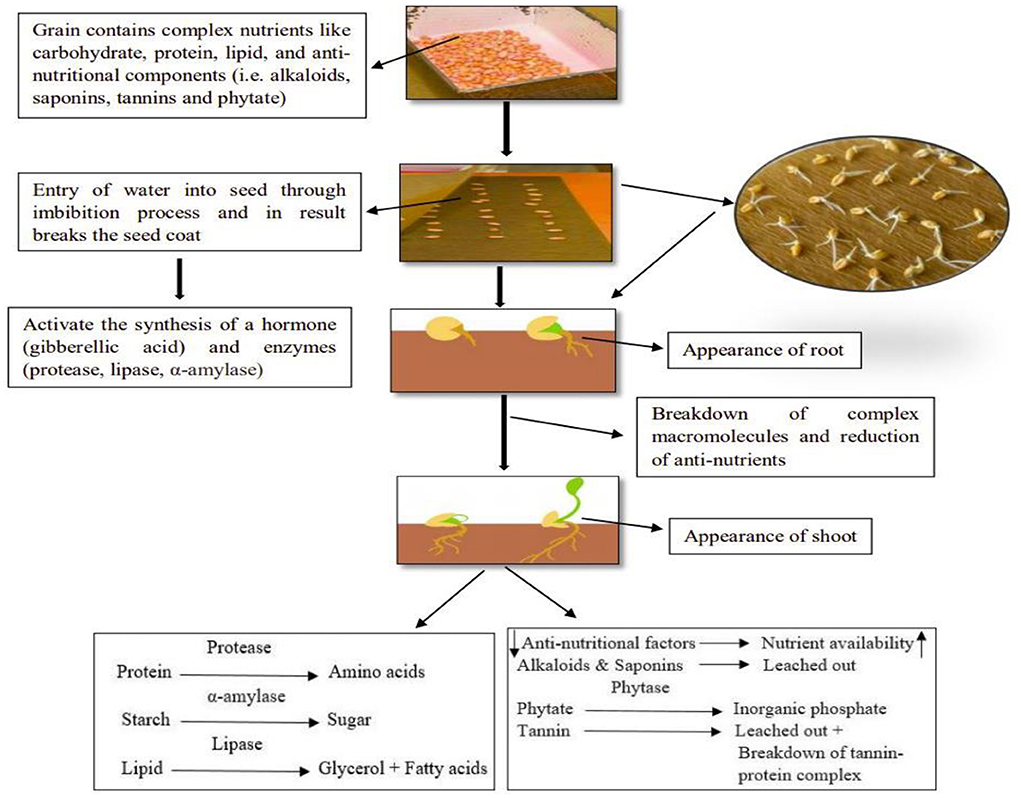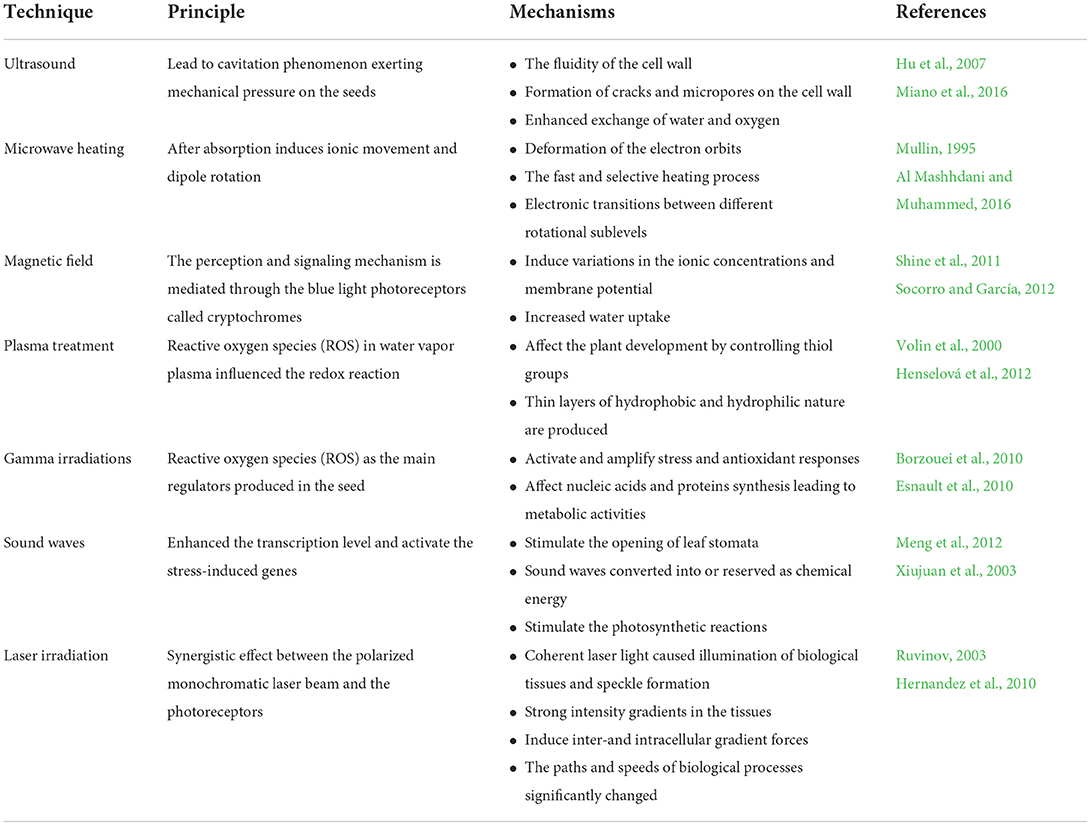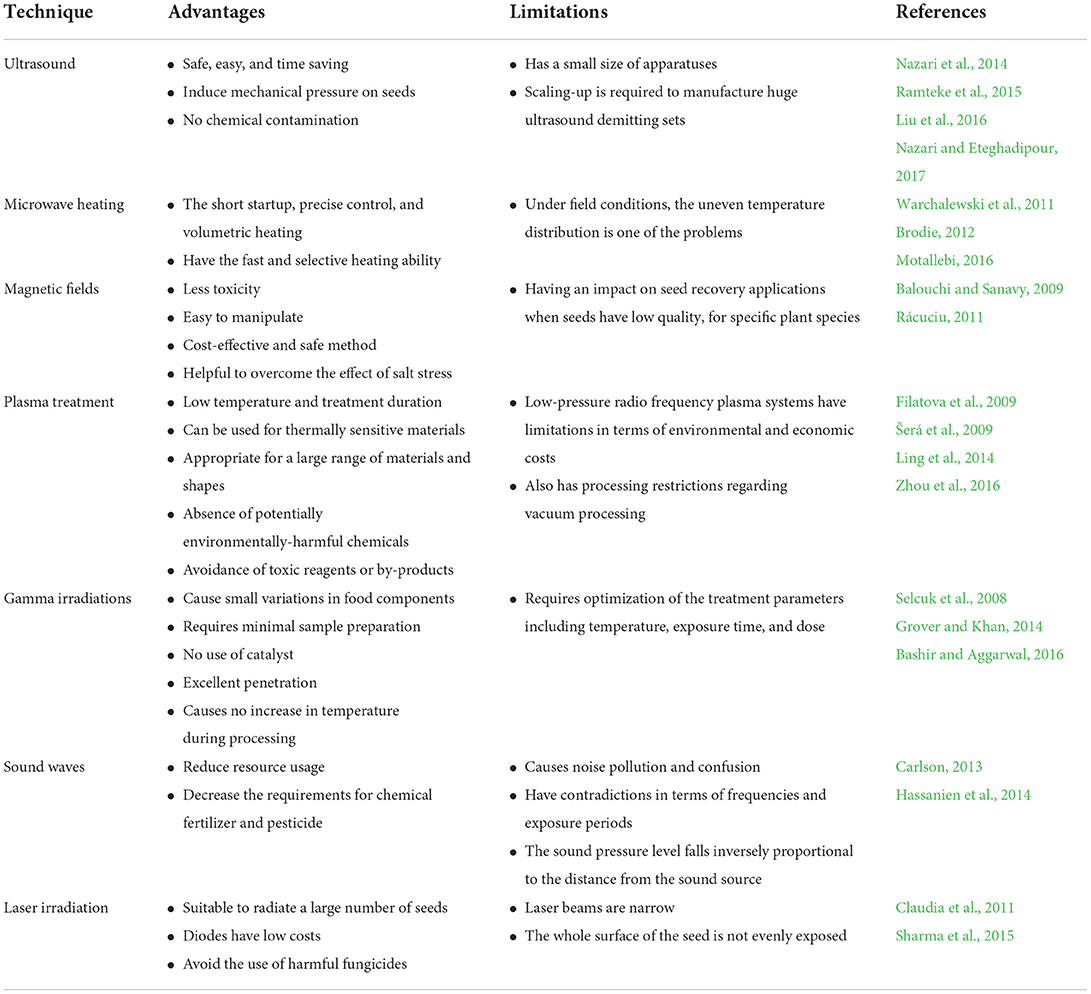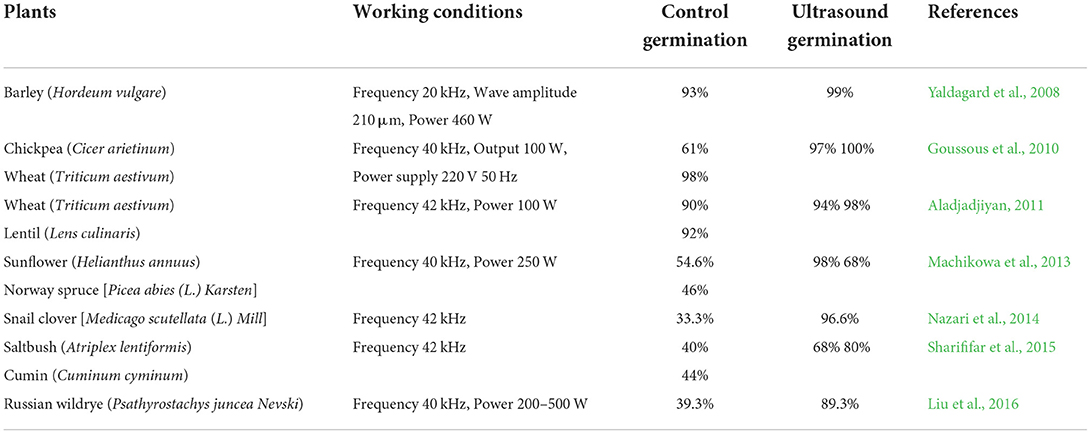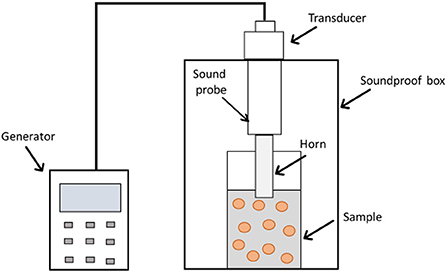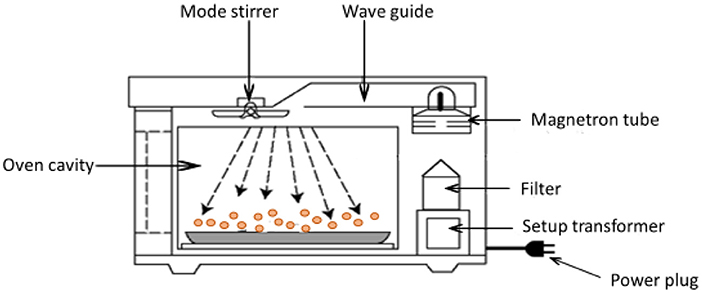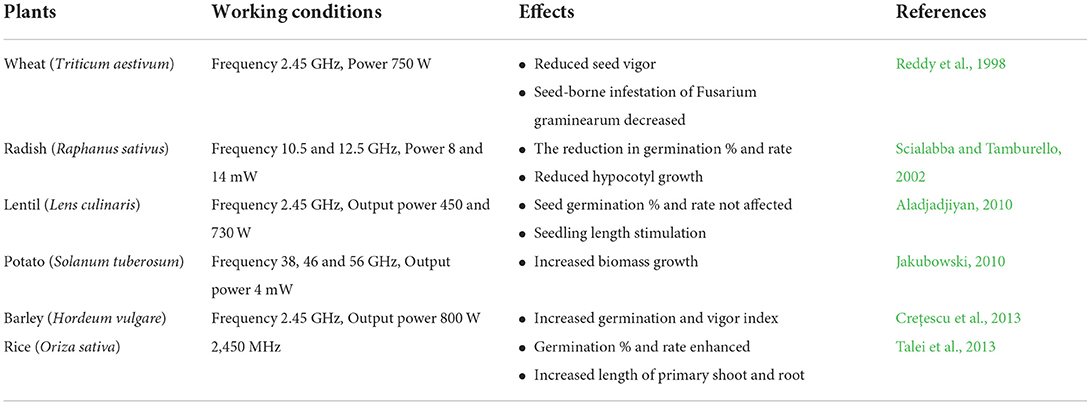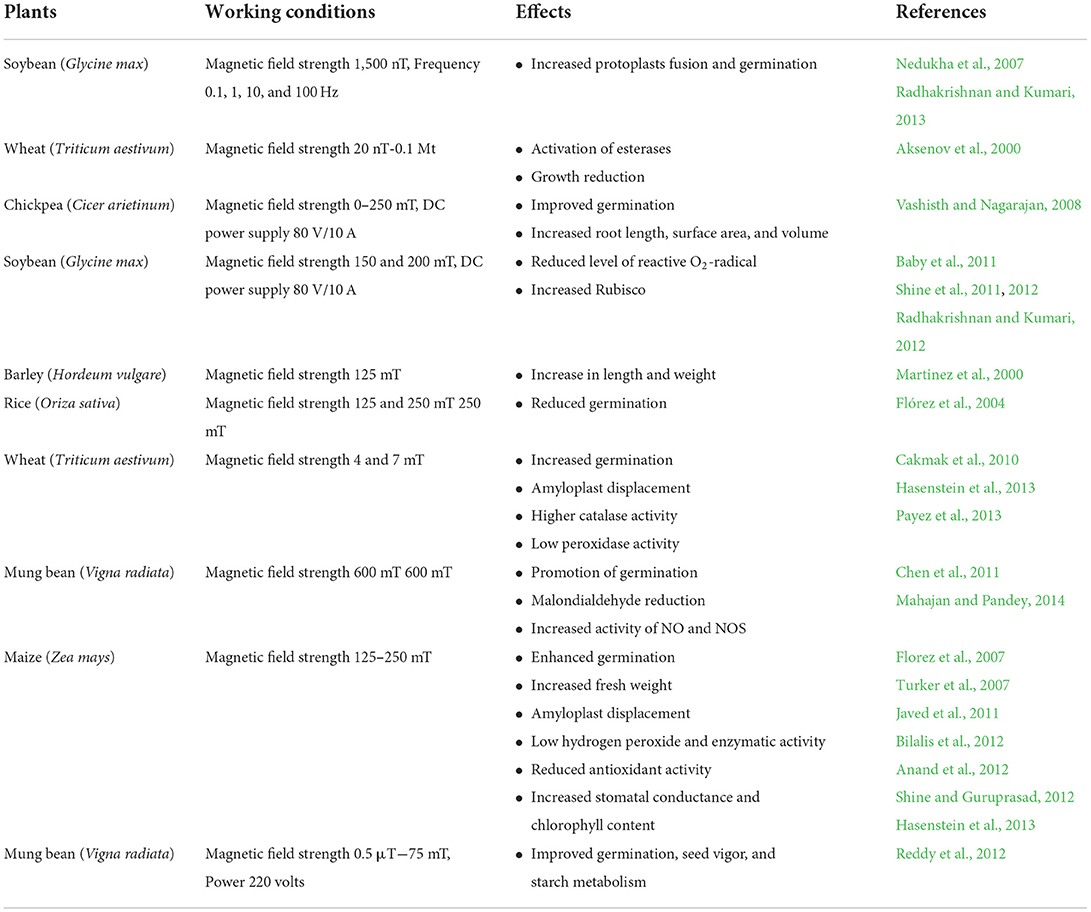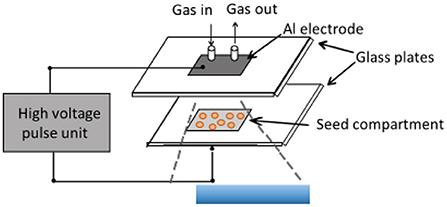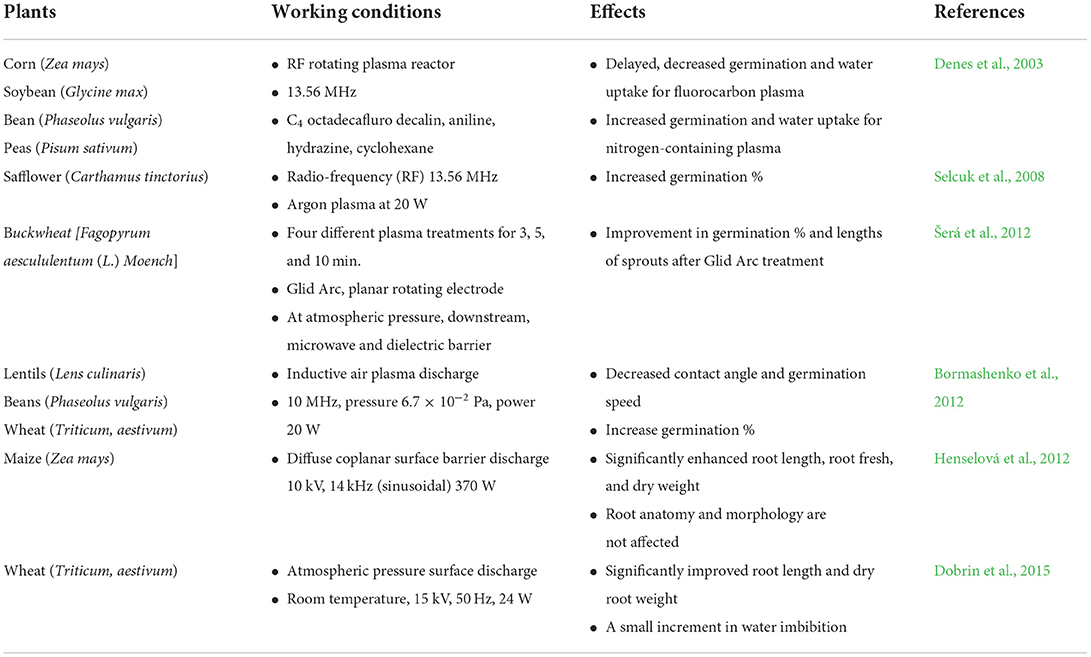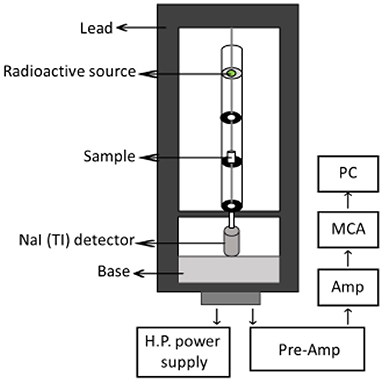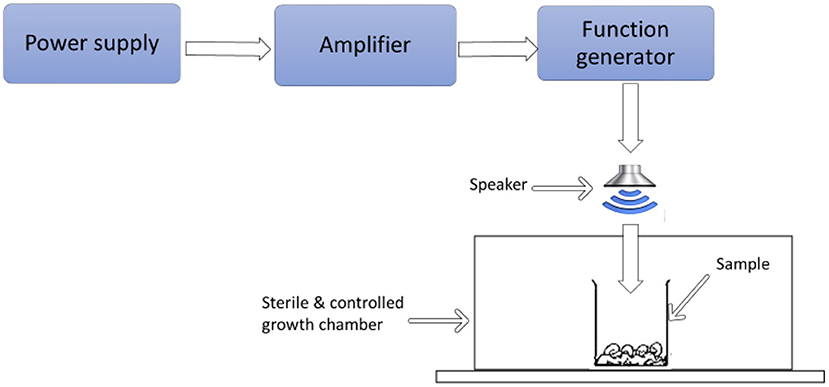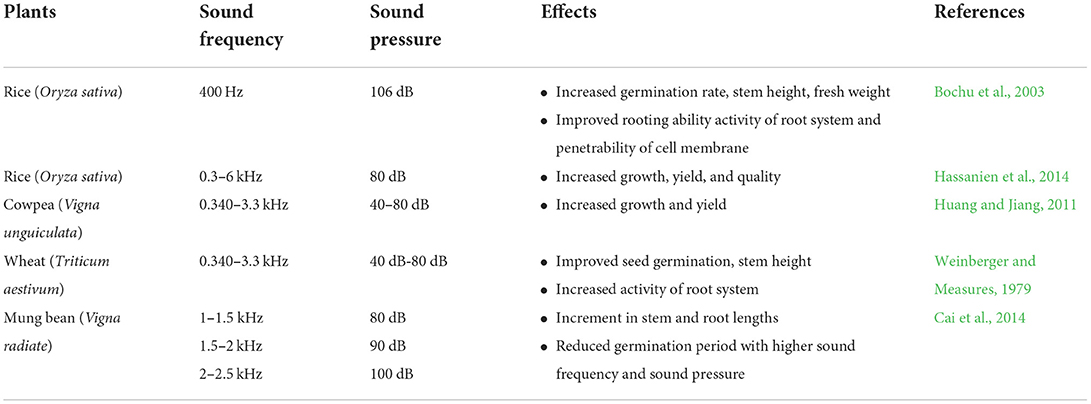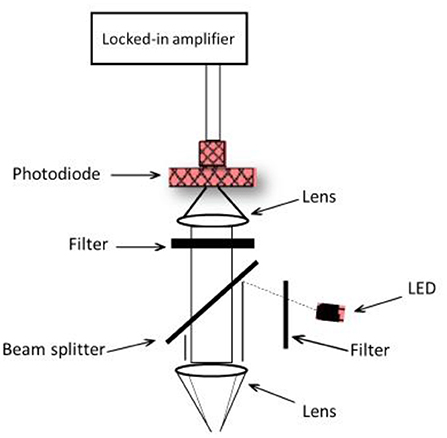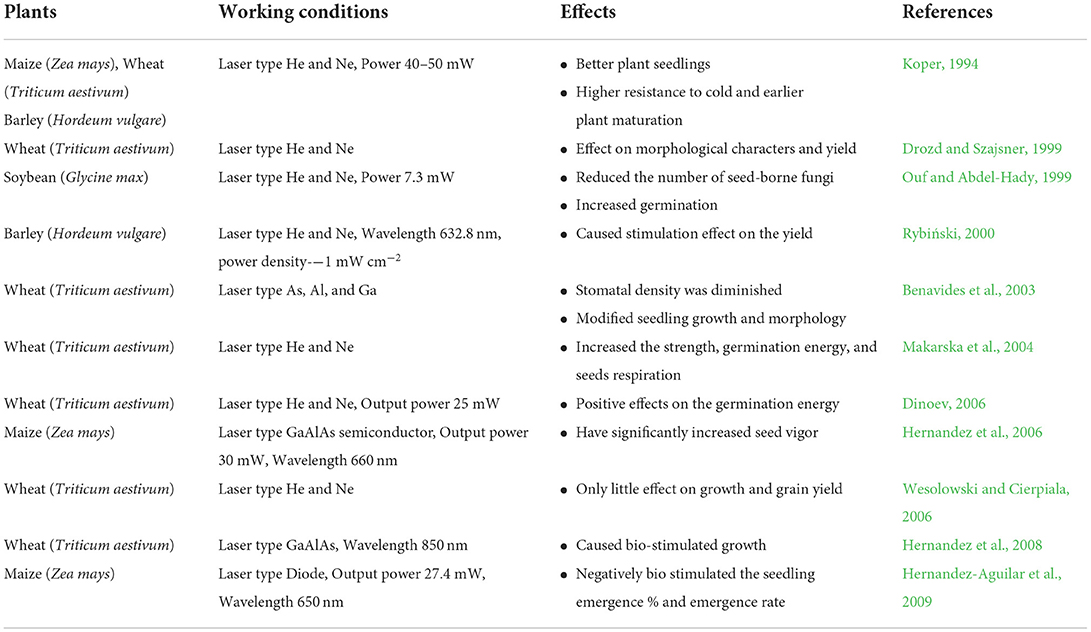- 1Department of Nutrition and Dietetics, The University of Faisalabad, Faisalabad, Pakistan
- 2School of Food Science and Engineering, South China University of Technology, Guangzhou, China
- 3Guangdong Key Laboratory of Food Intelligent Manufacturing, Foshan University, Foshan, China
- 4Overseas Expertise Introduction Centre for Discipline Innovation of Food Nutrition and Human Health (111 Centre), Guangzhou, China
- 5Faculty of Life Sciences, Institute of Home and Food Sciences, Government College University, Faisalabad, Pakistan
- 6Faculty of Engineering and Technology, Institute of Food Science and Technology, Khwaja Fareed University Engineering and Information Technology, Rahim Yar Khan, Pakistan
- 7Department of Agriculture and Food Technology, Karakurum International University, Gilgit, Pakistan
- 8Institute of Home Sciences, University of Agriculture, Faisalabad, Pakistan
- 9Institute of Diet and Nutritional Sciences, The University of Lahore, Lahore, Pakistan
For nutritional security, the availability of nutrients from food sources is a crucial factor. Global consumption of edible seeds including cereals, pulses, and legumes makes it a valuable source of nutrients particularly vitamins, minerals, and fiber. The presence of anti-nutritional factors forms complexes with nutrients, this complexity of the nutritional profile and the presence of anti-nutritional factors in edible seeds lead to reduced bioavailability of nutrients. By overcoming these issues, the germination process may help improve the nutrient profile and make them more bioavailable. Physical, physiological, and biological methods of seed invigoration can be used to reduce germination restraints, promote germination, enhance early crop development, to increase yields and nutrient levels through sprouting. During sprouting early start of metabolic activities through hydrolytic enzymes and resource mobilization causes a reduction in emergence time which leads to a better nutritional profile. The use of physical stimulating methods to increase the sprouting rate gives several advantages compared to conventional chemical-based methods. The advantages of physical seed treatments include environment-friendly, high germination rate, early seedling emergence, uniform seedling vigor, protection from chemical hazards, and improved yield. Different physical methods are available for seed invigoration viz. gamma irradiation, laser irradiation, microwaves, magnetic field, plasma, sound waves, and ultrasonic waves. Still, further research is needed to apply each technique to different seeds to identify the best physical method and factors for seed species along with different environmental parameters. The present review will describe the use and effects of physical processing techniques for seed invigoration.
Introduction
Edible seeds including cereals, pulses, and legumes are globally used as a staple food and possess several functional properties like antioxidant, antidiabetic, anticancer, and antitumor effects. They are a rich source of vitamins, minerals, and fiber and also contain enough amount of bioactive components such as phenolics, carotenoids, lignin, β-glucan, inulin, resistant starch, sterols, and phytates. According to several studies, the controlled germination process is a valued technique to improve the nutritional and medicinal values of edible seeds (Hayat et al., 2014; Verspreet et al., 2015; Özer and Yazici, 2019) (Figure 1). Sprouts are germinated seeds of cereals, pulses, and legumes that grow into seedlings, and are characterized by nutrient bioavailability and their profile including phenolic profile, antioxidant profile, vitamins, minerals, along with other micro and macronutrients. As compared to the un-sprouted grains the sprouted grains are considered an important functional ingredient due to having major nutritional, textural, and tasteful, advantages. The edible sprouts can help to provide essential nutrients, maintain health status, and to prevent disease. Currently, interest in the use of sprouted grains as functional ingredients and food is growing with increased interest from food researchers, nutritionists, producers, and consumers (Aloo et al., 2021; Pires et al., 2021).
The germination process can improve the levels of simple sugars, free amino acids, and organic acids through the catabolism of macronutrients like carbohydrates, protein, and fatty acids (Wang et al., 2005; Shi et al., 2010; Benincasa et al., 2019). It can also decrease different anti-nutritional factors and indigestible components, like lectin and protease inhibitors (Saithalavi et al., 2021). Moreover, through germination secondary metabolites such as vitamin C and polyphenols can accumulate in edible seeds (Toro et al., 2021).
Sprouting is the crucial phase in the plant at which fast germination and seedling emergence are vital aspects that can be stimulated in seeds (Sharififar et al., 2015; Lai et al., 2016). Germination stimulation has been achieved through several methods such as fertilizers, light, seed scarification, seed stratification, salinity, temperature, humidity, and regulatory hormones (Rifna et al., 2019b). As a substitute for chemical invigoration techniques for plant growth stimulation, the use of physical methods attracts more and more attention. The physical techniques can improve food quality without imparting any safety concerns, thus the applications of these methods have increased to affect plant growth and germination (Bose et al., 2018).
Now sprouted grains are becoming popular and consumed all over the world. To increase the nutritional value of foods and to improve the sensory properties of sprouted grains flour is used in different products. Despite several efforts to explore the utilization of sprouted grains, limited products have been produced and introduced into the market. Thus, it is required to conduct more research and incorporate seed sprouts into different food industries to introduce them into the food chain (Liu et al., 2017; Yilmaz et al., 2020).
Therefore, different physical methods have been developed to facilitate the germination process and to improve the plants' growth and production. This paper gives a brief overview of such physical processing technologies including gamma irradiation, laser irradiation, microwaves, magnetic field, plasma, sound waves, and ultrasonic waves. Additionally, mechanisms of seed germination promotion by processing treatments and how they impact germination have also been discussed.
Physical seed invigoration techniques
Throughout the transient activation of the pre-germination metabolic activities, seed priming is a well-known and established way to improve seed quality (good nutritional composition along with reduction of seed dormancy, the breakdown of the complex of anti-nutrients, and the release of nutrients and their improved bioavailability) (Chakraborti et al., 2021). Under adverse environmental circumstances (abiotic stresses like water deficit, high salinity, high temperature, submergence, etc.) seed priming has arisen as a constructive way of improving seed vigor, germination synchronization, and seedling growth (Marthandan et al., 2020). A variety of priming techniques is available, and some of them are properly categorized such as hydro-priming and osmo-priming. As compared to osmo-priming and chemical-based conventional treatments, physical processing techniques have shown several advantages. Due to their less damaging effects on the environment like anthropogenic changes in the soil, water, and atmosphere, recently the use of physical methods for plant growth stimulation is becoming more popular (Table 1) (Bilalis et al., 2012; Rifna et al., 2019a). In chemical-based methods, the required chemical compounds are directly injected into the cell while in physical methods, energy is introduced into the cell which generates conditions for different transformations at a molecular level (Govindaraj et al., 2017). Different positive biological changes can be introduced in plants without influencing their biology through the application of various physical factors. These physical techniques decrease the on-farm pollution of raw materials, minimize the requirement for fertilizers, and can also be used for the disinfection of seeds (Table 2) (Bera et al., 2021). All biological activities depend on the exchange of energy between the cell and the environment. Improving the germination and yield of crops by using energy is an advanced area in research. Energy treatment stimulates the enzymatic reactions leading to the initiation of physiological and biochemical changes. All these changes are an indication of plant growth and development processes which eventually improve the quality and yield of produce (Govindaraj et al., 2017).
Ultrasound seed processing
Ultrasonic waves (US) are mechanical waves having a frequency higher than 20 kHz and cannot be detected by a human audition system. This technology has been successfully used in different mass transfer processes of food including drying, extraction, osmotic dehydration, desalting, and hydration (Miano et al., 2016; Asfaram et al., 2019). Nowadays to break the seed dormancy ultrasonic waves have attracted the researcher's attention as being a safe, easy, and time-saving technique (Ramteke et al., 2015; Liu et al., 2016). In recent years the mechanism of ultrasonic wave activity on seed germination in different plant species has been explored as mentioned in Table 3. In ultrasonic treatment, seeds are placed into an ultrasonic wave emitting apparatus in which water is used as a medium (Nazari and Eteghadipour, 2017). For seed germination, oxygen availability and water uptake are the essential parameters, so ultrasonic waves alter the seed's characteristics through which these factors become available more efficiently (Liu et al., 2016).
Ultrasonic waves in water lead to cavitation, a phenomenon creating micro-bubbles in water that exerts mechanical pressure on the seeds. Mechanical pressure exerted by the cavitation process further causes fluidity of the cell wall and the formation of cracks and micropores in it (da Silva and Dobránszki, 2014; Rifna et al., 2019a). A study conducted on mung beans showed an increase in their porosity after ultrasonic treatment. Seeds become more porous for water and oxygen exchange due to the production of micro-pores and micro-cracks. It was demonstrated that ultrasound technology improved the hydration process of mung beans, reducing the total process time by almost 25% [increasing the water absorption rate to ~44%] (Miano et al., 2016). In studies, conducted by Yaldagard et al. (2008) and Sharififar et al. (2015) it has been revealed that ultrasonic treatment increases the hydration process in seeds, therefore leading to an increase in enzymatic reactions especially related to alpha-amylase. Thus, the starch hydrolysis conducted by alpha-amylase has resulted from an increment in seed germination speed and percentage (Yaldagard et al., 2008; Sharififar et al., 2015). A schematic presentation of ultrasonic wave treatment in seeds is shown in Figure 2.
Through several studies, it has been investigated that ultrasound is a promising method to break seed dormancy and enhance germination. A summary of the findings regarding the effects of ultrasound treatment on the seed germination percentage of different edible seeds has been provided in Table 3. Yaldagard et al. (2008) reported a 6% increase in germination percentage of barley (Hordeum vulgar L.) seeds after ultrasound waves' treatment as compared to control. Application of sonication treatment on Norway spruce (Picea abies L.) Karsten seeds increased germination by 22% (Rîşca and Fártáiş, 2009). Goussous et al. (2010) showed that ultrasonic waves' application to chickpeas (Cicer arietinum), wheat (Triticum aestivum), and watermelon (Citrullus vulgaris) increased their germination percentage by 36, 2, and 2%, respectively, in comparison to control. Another investigation conducted by Aladjadjiyan (2011) revealed a 4 and 6% increase in the germination of wheat (Triticum aestivum) and lentils (Lens culinaris, Med.), respectively. According to an investigation by Wang et al. (2012) on switchgrass (Panicum virgatum L.) seeds, sonication enhanced germination by up to 23.2%.
The application of ultrasonic waves on sunflower (Helianthus annuus L.) seeds, enhanced their germination maximum by up to 43.38% (Machikowa et al., 2013). Another in vitro study conducted on snail medick [Medicagoscutellata (L.) Mill] seed indicated that ultrasound increased germination up to 63.3% (Nazari et al., 2014). In a study conducted on peas (Pisum sativum), as compared to control, sonication treatment caused a 13.1% increase in seed germination. The operating parameters were time and temperature at specific input power. Pea seeds were subjected to an ultrasonication treatment of 40 kHz for 1 min at 25 celsius (Chiu and Sung, 2014). A similar study conducted by Sharififar et al. (2015) showed that ultrasound treatment applied to big saltbush (Atriplex lentiformis), cumin (Cuminum cyminum), and caper beans (Zygophyllum eurypterid) significantly increased their germination percentage up to 28, 36, and 35.7%, respectively, in comparison to control treatment. Overall in agreement with the positive effects of ultrasonic waves studied in most cases of tested species, it's clear that ultrasonic waves can affect seed germination positively.
Microwave seed treatment
The microwave component of the electromagnetic spectrum includes radiation having a frequency within the range of 300 MHz to 300 GHz and wavelength ranging between 1 m down to 1 mm. Now it is recognized that microwave radiation (MWs) after absorption as non-ionizing electromagnetic radiation causes different changes in biological systems which are mostly thermal and non-invasive (Bera et al., 2021). MWs can induce various biological changes depending on different factors such as field strength, frequencies, waveforms, modulation, and duration of exposures (Vian et al., 2006). Mostly the effect of MWs on humans and animals was extensively studied and addressed, while there is a very small number of studies related to the effect of MWs on plants (Jayasanka and Asaeda, 2013). Most of the available work described the effect of radiations having the 2.45 GHz frequency, which is absorbed in living cells through water molecules (Creţescu et al., 2013). After absorption into living cells and tissues, MW radiations induce ionic movement, and dipole rotation leading to the deformation of the electron orbits which finally causes a fast and selective heating process (Mullin, 1995; Rifna et al., 2019a). The schematic diagram of the experimental set-up for microwave treatment is given in Figure 3.
MWs treatment can also result in electronic transitions between different rotational sublevels. In the organic molecules between vibrational levels transitions mostly occur in near Infrared (IR) regions (750 to 1,300 nm) of the electromagnetic spectrum, while between rotational levels occur in far IR regions and near microwave regions (1 mm to 1 m) (Al Mashhdani and Muhammed, 2016). Intermediated frequency levels of radiation (2,450 MHz) applied to seeds showed higher enzymatic reactions and increased growth rates. Still, the mechanism of MWs is not as yet fully understood but according to Rajagopal (2009) exposure to microwaves, 2.45 GHz and 650 W for 30 s are enough to ensure a high germination rate. In several studies, lethal level MWs have been used for preventing the growth of weeds in the soil while non-lethal level MWs treatments have been widely used for seed decontamination before sowing (Scialabba and Tamburello, 2002; Knox et al., 2013; Sahin, 2014). Application of MWs caused heating of soil up to 80°C which results in suppressed germination of the weed. Thus, in greenhouses from horticultural/ornamental plant nurseries, MWs appeared as an effective non-chemical alternative method for weed management (Velázquez-Martí et al., 2006).
There is very limited literature about the use of MWs radiations as seed stimulation treatment in a few plants, affecting their germination performance. Through different studies, it was investigated that application of 2.45 GHz MWs radiation has no major influence on seed germination, but in some plant species including wheat, green gram, moth bean, and Bengal gram, it showed a beneficial effect on biomass accumulation and growth (Jakubowski, 2010; Talei et al., 2013). A summary of the findings of the effects of microwave treatment on seed germination of the mentioned plant species has been provided in Table 4. The effect of microwave irradiation at 935.2–960.2 MHz with intensities of 0.07–0.15 mW/cm2 on maize grains was studied and revealed a clear increase in germination and seedlings development (Khalafallah and Sallam, 2009). Aladjadjiyan (2010) conducted an experiment stating that microwave pretreatments with frequency 2.45 GHz for 5, 10, 15, 20, and 25 s and seeds showed enhanced germination parameters as compared with controls. Best results were obtained with an exposure time of 30 s and output power of 450 W giving 10% longer shoot length and 7% root length than the control one. Ragha et al. (2011) used the low power MWs (frequency range of 8.5–10.27 GHz) having non-thermal intensity having a frequency of 1 kHz and studied their effect on the wheat (Triticum aestivum), Bengal gram (Cicer arietinum), green gram (Vigna radiate), and moth bean (Vigna Aconitifolia). Effects of different parameters like frequency (8.5 to 10.27 GHz), power (−1.0 to 3.5 dBm), exposure time (12 to 28 min), and power density (1.5 to 5.5 cm) were studied to evaluate their effect on germination. As compared to control the different treatments induced stimulating effects on germination %, seedling vigor, and biomass % of plants including wheat, green gram, moth bean, and Bengal gram, especially when used with low levels of power, exposure time, and power density while high frequency stimulated seed germination as compared to control (Ragha et al., 2011).
In an experiment effect of MWs using a wireless router (WLAN: 70 mWm−2) and mobile devices (GSM: 100 mWm−2) was studied on three different aromatic plant seeds including parsley (Petroselinum crispum L. cv. Plained Leaved), celery (Apium graveolens L. cv. Pascal Giant), and dill (Anethum graveolens L. subsp. hortorum cv. Common) (Soran et al., 2014). Different plant parameters were studied regarding MWs effect including leaf structure, essential oil content, and emission of volatile compounds. The results exhibited that WLAN frequency MWs appeared to be more harmful than GSM-frequency MWs, and the MWs treatments caused both structural and chemical alternations (Soran et al., 2014). Like other radiation treatments, the efficiency of MWs application depends on different parameters such as plant species, growth stage, exposure duration, frequency, and power density (Jayasanka and Asaeda, 2013). Different studies in this area revealed that MWs treatment showed a positive effect on some plants while negatively influencing other plants; which recommended that the influence of MWs is related to radiation frequency, exposure duration, and environmental circumstances (Khalafallah and Sallam, 2009).
Magnetic fields for seed processing
The use of magnetic fields (MFs) also showed positive responses regarding the rate of germination, growth, and crop yield along with the decreased incidence of pathogenic diseases. In a study annual medics and dodder seeds were treated with an electromagnetic field which shows a significant effect on germination rate. Annual medics seeds were treated at 80 μT for 10 min and 30 min, and 128 μT for 10 min while dodder seeds were treated at 88 μT for 12 h in a wet state, and 128 μT for 24 h in dry seeds (Balouchi and Sanavy, 2009; Araújo et al., 2016). The exposure of MFs depends on flux density and duration of exposure which defines its dose and MFs dose influences the germination, seedling growth, and yield (da Silva and Dobránszki, 2016). The schematic representation of the experimental MFs setup is shown in Figure 4. The flux density of the magnetic field changes with the static or alternating magnetic fields, thus increasing the germination percentage and affecting the preliminary growth stages (Hozayn et al., 2019). In a study, magnetically treated water was used as a hydro-priming technique which as result enhanced the germination rate and plant growth (Morejon et al., 2007). Along with plant growth, the application of MFs also influenced the enzymatic activities, phytochemical reactions, and respiration process (Carbonell et al., 2000; Martinez et al., 2000; Rifna et al., 2019a). MFs treatment results in speeding up the plants' growth, root development, and protein biosynthesis (Kordas, 2002).
The mechanism behind perceiving MFs and then regulating of signal transduction pathway is still not understood. However, according to Ahmad et al. (2007), the mechanism of MFs signaling is facilitated by blue light photoreceptors which are known as cryptochromes. Chloroplast has paramagnetic characteristics therefore, MF treatment induces metabolic reactions in the seed which stimulate the germination (Aladjadjiyan and Ylieva, 2003). Another work performed by Racuciu et al. (2008) showed that the application of a magnetic field enhanced the enzymatic activities. According to Copeland and McDonald (2012), the efficiency of MFs stimulation is assessed by two factors germination energy and germination capacity. Higher germination energy frequently leads to stronger radicle development and increased biomass percentage.
For several years in research studies influence of MFs affecting the plant, and germination parameters have been the subject of interest. Lately, many researchers have stated the positive effects of MFs on germination %, seedling growth, growth of meristem cells, and chlorophyll contents (Qados and Hozayn, 2010; Hozayn et al., 2014). Chickpea (Cicer arietinum) seeds were treated with MFs for 1–4 h in steps of 50 mT intensity from 0 to 250 mT and increased germination speed, seedling length, and dry weight as compared to control (Vashisth and Nagarajan, 2008). Static MFs having intensities 4 or 7 mT with 0, 2, 6, and 10 atm osmotic pressure created with sucrose or salt were applied to bean or wheat seeds. The MFs treatment improved the germination ratios, without having any influence of increased osmotic pressure. The greatest germination and growth rates observed in both wheat and bean plants were exposed to 7 mT MF as compared to the untreated seeds. In wheat seedlings, the root and shoot length was 7.63 ± 0.08 and 9.62 ± 0.07%, respectively. In bean seedlings, the root and shoot length was 5.46 ± 0.09 and 7.65 ± 0.08%, respectively (Cakmak et al., 2010). Application of non-uniform MFs having intensities of 60, 120, and 180 mT for different durations of 5, 10, and 15 min, respectively, resulted in significant improvement in pea germination. The high germination leads to increased emergence index, and vigor index by 86 and 205%, respectively (Jamil and Ahmad, 2012). Similarly, in another experiment treatment of corn seed with the pulsed electric magnetic field (EMFs) for different time durations of 0, 15, 30, and 45 min enhanced germination %, vigor, chlorophyll content, leaf area, fresh and dry weight, and yields (Bilalis et al., 2012).
After overnight soaking wheat grains were treated for consecutively 4 days and 5 h/day with a 30 mT static magnetic field (SMF) and a 10 kHz EMF. Results showed an increased germination speed and seedling growth compared to the control group (Payez et al., 2013). An MF applied to dormant seeds of barley, corn (Zea mays), wheat, and beans significantly enhanced the rate of their seedling growth. Exposure of mung bean (Vigna radiata) seeds to static MFs having an intensity of 87 to 226 mT for a duration of 100 min, resulted in a direct enhancement in germination % with increasing MFs intensity. At an intensity level of 0.194 T, the maximum germination of ~80% was observed as compared to the control (Mahajan and Pandey, 2014). Calculated mean values of germination time, germination rate, germination rate coefficient, magnetic constant, transition time, and water uptake, showed the positive effect of static MF in improving germination (Mahajan and Pandey, 2014). A summary of the findings of the effects of magnetic fields on seedling performance of the different plant species has been provided in Table 5.
Plasma seed treatment
In the agriculture sector, applications of plasma treatment are also gaining attention to influence germination and plant growth (Hayashi et al., 2011; Klämpfl et al., 2012). In various studies, scientists showed improved germination and growth pattern through the application of plasmas with various vapors and gases such as aniline, cyclohexane, and helium, respectively (Jiayun et al., 2014). In this regard, different types of plasma techniques have been used such as atmospheric plasma, microwave plasma, and magnetized plasma (Zhou et al., 2011). Figure 5 represents the schematic setup of the plasma seeds treatment. The influence of different gases used in plasma treatment is generally investigated. Different studies discovered that active oxygen species such as O, , O3, and OH in water vapor plasma influenced the redox reaction which in results affects the plant development by controlling thiol groups' redox status (Henselová et al., 2012). In substitution for scarification and stratification, non-thermal plasma techniques were used as a seed priming method (Dhayal et al., 2006; Mahendran et al., 2017). Plasma application has several benefits including less seed destruction and being environment friendly having no chemical utilization (Volin et al., 2000; Dhayal et al., 2006; Bourke et al., 2018). Besides improving seed quality and plant growth, plasma can sterilize seeds and also cause variations of enzymatic reactions (Sera et al., 2010; Henselová et al., 2012).
Plasma can affect seed germination by suspending or enhancing the process. The new significant plasma-related studies include the use of microwave discharges (Sera et al., 2010) and low-density radio frequency discharges (Bormashenko et al., 2012; Filatova et al., 2013). Plasma treatment induced the development of thin (0.5–2 μm) hydrophobic and hydrophilic layers in the seed, which become very helpful in different cultivation environments including climate conditions, temperature, humidity, lighting, nutrition, and water volume. Thus, in wet and cold soil, the hydrophobic layers interrupt the water absorption which results overcome the chilling injury and improving the seed viability (Volin et al., 2000; Kavak and Eser, 2009). In another study, the use of the plasma method caused increased hydrophilicity which as result stimulated the water uptake and germination process (Bormashenko et al., 2012).
The examination of several seed germination studies showed the effect of different plasma treatments applied on various seeds including wheat, maize, radish, oat, safflower, and blue lupine (Lynikiene et al., 2006; Sera et al., 2010). Different examples from the literature of the plasma treatment on different seeds have been provided in Table 6. Safflower (Carthamus tinctorium L. semen) seeds were treated with argon-containing low-pressure capacitively-coupled RF plasma at a pressure of 1.6 and 16 Pa for a time duration of 30 and 130 min, respectively. Treatment of 1.6 Pa, for 30 min resulted in a 30% increase in germination rate while a 50% increase was attained at 16 Pa, for 130 min (Dhayal et al., 2006). The authors claimed that the plasma treatments have caused biochemical modification on the seeds as compared to removing germination inhibitors (Kim, 2019; Guo et al., 2020). Filatova et al. (2013) used air plasma 5.28 MHz at a pressure of 0.3–0.7 Torr to treat blue lupine (Lupinus angustifolius), soy, honey clover, and Galega (Galega virginiana) seeds and investigated a 10–20% increase in seed germination and crop viability.
Henselová et al. (2012) used a low temperature diffuse coplanar surface barrier discharge air plasma at atmospheric pressure for 60 and 120 s and investigated the growth, anatomy, and biochemical changes that occurred in maize seeds (Zea mays L.). After 60 s plasma treatment seedlings showed an increase in root length (21%), root fresh weight (10%), and root dry weight (14%). The authors also detected significant changes in dehydrogenase, superoxide dismutase, catalase, and guaiacol-peroxidase. Bormashenko et al. (2012) treated the grains of lentil (Lens culinaris), beans (Phaseolus vulgaris), and wheat (Triticum spp.) with non-equilibrium plasma. Filatova et al. (2013) and Filatova et al. (2014) treated seeds wheat (Triticum aestivum L.), narrow-leaf lupine (Lupinus angustifolius), and corn (Zea Mays L.) for 10 min with capacitively-coupled low-pressure (40–80 Pa) RF air discharge plasma by using frequency 5.28 MHz and specific power 0.34–0.65 Wcm3. Similarly, in another study treatment of soybean seeds with cold plasma, treatment having helium with 0, 60, 80, 100, and 120 W for 15 s showed positive effects on seed germination and seedling growth and water uptake was also greater (Ling et al., 2014).
Gamma irradiations seed invigoration
In agriculture sciences, gamma radiation has several applications including food microbiological safety, storability subjects, slow fruit ripening, and vegetable sprouting, along with stimulation of seed germination (Araújo et al., 2016). Among IR, gamma (γ) radiation has high energy and is produced from Cobalt-60. Gamma radiation can penetrate and interact with biological materials (Islam, 2017). Units of Gray (Gy), are used to express the level of absorbed IRs, while 1 Gy dose is equal to 1 Joule radiation energy absorbed per kilogram. Another unit called Sievert unit (Sv) is also used to express the level of absorbed IRs but in the case of interaction biological material, like 1 Gy, 1 Sv is equal to 1 Joule radiation energy absorbed per kilogram of biological material. Another important factor to consider while using the IR technique is the dose rate defined as the rate of energy deposition (Gyh−1) (Moussa, 2006). Gamma radiations can improve product quality, grain yield, and salinity tolerance (Kiong et al., 2008; Majeed et al., 2018). The biological effects of IRs depend on their chemical reactions with biological molecules and water for producing free radicals which control the activity of biomolecules (Araújo et al., 2016). Figure 6 gives the schematic outline of the gamma irradiation setup. This leads to the activation of an antioxidant system that prepares the defensive mechanism of plants against stresses (Wi et al., 2007; Ashraf, 2009).
Gamma radiations do not damage the deoxyribonucleic acid (DNA) and structural integrity of seeds and thus can activate various biochemical reactions in the seed (Bhosale and More, 2013). These radiations can affect the different components of seeds like cell membranes, proteins, and nucleic acids. γ-rays can be used as a seed priming technique to boost the germination process but its effect depends on several factors like radiation dose, intensity, and exposure time (Kovacs and Keresztes, 2002; Majeed et al., 2017). The biological or molecular mechanisms involved in the effects of radiation are not properly understood and several ideas have been given.
The application of γ-rays in seeds produces reactive oxygen species (ROS) as the result of water radiolysis. These species react as regulators which can amplify the stress and activate antioxidant responses, thus in this mechanism, ROS has an important role as a signaling molecule [gibberellins signaling pathway and oxidation of negative regulators of germination like abscisic acid] (Borzouei et al., 2010; Esnault et al., 2010). Therefore, γ-rays treated plant seeds easily overwhelmed the fluctuations in daily stress conditions, including light intensity, temperature, and water loss (Gicquel et al., 2012; Qi et al., 2015). Low dose γ-irradiations in seeds induce positive effects on enzymatic reactions and also affect nucleic acids and proteins synthesis which consequently enhances metabolic activities in the seed leading to breaking the seed dormancy and boosting germination speed and plant development (Abdel-Hady et al., 2008). The impact of γ-irradiation in seed technology as a seed invigorating technique has been an impactful way to improve germination. Arabidopsis thaliana seeds were treated with γ-ray's 50 Gy dose which in result showed positive results on all the tested growth parameters such as germination index, seedling growth, root length, and fresh weight (Qi et al., 2015).
Similarly, in another study, Oryza sativa L. cv-2233 and Phaseolus mungo L. dried seeds were treated with γ-rays ranging between 50 and 350 Gy. Oryza sativa, showed a stimulating response at 50 Gy giving approximately plant height 19+1.4%; panicle length 27+2.1%; seed number per panicle 64+2.8%, tiller number 17+1.7% while Phaseolus mungo showed at 200 Gy giving approximately plant height 51+1.4%; pod length 49+4%; seed number per pod 56+2.8% (Maity et al., 2005). Similarly, the impact of gamma irradiation on maize (Zea mays, hybrid Turda Star) seeds was studied, and a radiation sensitivity test was performed to compare germination capacity, plant growth, and photosynthetic pigment contents between treated and untreated seeds. Again, the stimulatory effects of γ-ray were seen at low doses (2–30 Gy) (Marcu et al., 2013). Different examples from literature about gamma irradiation affecting germination characters of different seedlings have been provided in Table 7.
Sound waves based stimulation of seeds
Audible sound within a frequency of 20 Hz to 20 kHz can be heard by human beings. Among different environmental factors like moisture, light, wind, and temperature affecting plant growth, comparatively limited data is available about the effect of audible sounds on plant growth (Hassanien et al., 2014). Acoustic biology has become progressively more popular. Recently different plants have been treated with sound waves to check their effect at various physiological growth stages. The use of sound waves as an invigoration method could reduce the requirement for chemical fertilizers by opening the stomata, and also enhance disease resistance in plants by strengthening the immune system (Junfang, 2012; Carlson, 2013; Jung et al., 2018). Naturally, plants can generate low-frequency sound waves 50–120 Hz and can also absorb or resonate specific frequencies of external sound waves (Frongia et al., 2020). Plants emit also ultrasonic vibrations of 20–100 kHz, measured by connecting a sensor directly to the stem of the plant (Hassanien et al., 2014). Plants release sound emissions from different organs and at different growth stages or in response to different situations. Through the use of small highly sensitive sound receivers, it has been shown that plants emit sound from the xylem and faint ultrasound in case of stress (Jung et al., 2018; Khait et al., 2018). Sound waves can induce various changes such as cell cycle changes, the vibration of plant leaves, and the acceleration of cellular protoplasmic movement (Godbole, 2013). The experimental diagram of sound wave treatment of seed is given in Figure 7.
It has been stated that sound waves activate stress-induced genes and also increase their transcription level (Xiujuan et al., 2003). Sound waves treatment enhances the uptake of dews and sprays fertilizers by stimulating the leaf stomata. Moreover, the process of photosynthesis is also influenced by the conversion of sound energy into chemical energy (Meng et al., 2012). According to previous studies, musical sounds can directly influence the biological system and thus could significantly affect the seeds sprouting (Creath and Schwartz, 2004).
Several studies have been undertaken to understand the influence of sound and music on plants and plant growth (Table 8). Rideau wheat seeds treated with the sound frequency of 5 kHz and pressure level of 92 dB resulted in stimulated growth along with increased dry weight and number of roots (Weinberger and Measures, 1979). In an experiment, paddy rice seeds were treated with a sound frequency of 0.4–4 kHz and a pressure level of 106–111 dB. The biological effect of sound waves resulted in a significant increase in germination index, stem height, fresh weight, root system activity, and the permeability of the cell membrane (Bochu et al., 2003). According to some studies, music or sound containing hard-core vibrations can cause harmful effects on plant growth. While classical music has gentle vibrations that increase plant growth similarly violin music also induced positive effects significantly (Aladjadjiyan and Kakanakova, 2009). Plants can use acoustic signals from the surrounding environment and spread them rapidly (Gagliano, 2012). A sound wave can transfer energy, to initiate the cytoplasmic streaming and influence the membrane materials thus resulting in variations in biological function and increased metabolic reactions. In another study, at 0.2 and 0.3 kHz, sound frequency young root tips of Zea mays showed a clear bend toward a sound source (Gagliano, 2012).
Laser irradiation seed treatment
As in the agriculture field, irradiation is known as a new branch of seed invigoration technique. Laser radiations have features such as coherence, high density, monochromatic, and polarization, and all these properties make laser irradiations applicable in agriculture (Hasan et al., 2020). Various parameters of laser radiation can affect the physiological process in seeds, these parameters include the type of laser radiation, intensity, wavelength, intensity, and exposure time (Govindaraj et al., 2017). The synergistic effect of different mechanisms interacting with laser light results in a range of noticeable effects in the agriculture field. In several studies, laser irradiation showed a positive effect on germination and disease prevention in different crops such as rice, maize, wheat, peas, radishes, and corn (Aladjadjiyan and Kakanakova, 2009; Hernandez et al., 2010). The schematic diagram of the laser irradiation treatment is given in Figure 8.
Laser light treatment in seeds induces a series of reactions like accelerated maturity, improved disease resistance, improved energy potential, alpha-amylase action, and free radical's concentration (Klimek-Kopyra et al., 2021). In irradiated seeds, all these reactions lead to reduced seed dormancy, increased rate and percentage of germination, an improved profile of chlorophyll and carotenoid content, higher seed vigor, and a positive effect on the process of respiration and photosynthesis (Wang et al., 2019).
The authors also reported that in addition to serving as a pre-sowing seed treatment, laser irradiations can also affect the quality and quantity of production. Table 9 presents a list of several studies about the effect of laser stimulation on plants that can be found in the literature. In an experiment, He-Ne laser application as a pre-sowing treatment on four spring barley cultivars showed an increment in the germination capacity (Szajsner and Drozd, 2003). Treatment of wheat grains with semiconductor laser influenced their germination and development (Hernandez et al., 2008) while irradiation of tissue culture significantly caused changes in a lipid matrix structure (Salyaev et al., 2007).
The application of light from a laser diode of 650 nm and a power of 27.4 mW increased the germination of photosensitized wheat seeds (Aguilar et al., 2008). Soybean seedlings treated with 532 nm laser improved the photosynthesis proficiency and enhanced the isoflavone content (Tian et al., 2010). Irradiation treatment of A. farnesiana seeds for 9 min with He-Ne laser light at 1.70 W cm−2 affected the germination indices (Soliman and Harith, 2009). Several other studies used He Ne laser and approved promising effects on germination, in winter wheat genotypes, morphological characters were studied (Szajsner, 2009), in maize hybrids seeds activity of amylolytic enzymes was observed (Podlesny and Stochmal, 2005), and developmental phased of white lupine and fava bean plants were observed (Podlesny and Podlesna, 2004). Similarly, in different experiments, pre-sowing treatment of seeds with irradiation using specific application parameters showed significantly enhanced the production of fava bean seeds (Podlesny, 2007), alfalfa (Dziwulska et al., 2006), wheat (Szajsner, 2009), maize (Szajsner et al., 2007b), and barley (Szajsner et al., 2007a).
Conclusion and future prospects
High vigor seeds represent improved establishment and productivity of crops. Therefore, sustainable crop production requires the use of low-cost and environment-friendly techniques of seed enhancement. Several pre-sowing treatment attempts have been made to improve the yield. Physical methods are an innovation in the research area of seed invigoration to improve crop yield. These physical techniques are the substitute for chemical-based techniques in the development of new biotech-based solutions. These techniques are environmentally friendly and can be used on a high throughput scale. Although, plants respond to the physical treatment but still on a commercial scale it has not been fully exploited. Enough facilities are present to conduct physical treatment of seeds but still, there is a lack of information regarding pre-germinative metabolic reactions occurring in seeds. This information gap is hindering the successful application of these techniques, as seen for chemical treatments. There is also needed to explain all biochemical reactions affecting these processing technologies which result influence the growth and development of plants. These processing techniques have a challenge which is that not all techniques may result in improved germination of seed. The invigoration methods can make the seeds vulnerable to stress conditions if an unsuitable technique is applied to seeds. Therefore, it's important to determine all working conditions and protocols specific to plant seeds. Because the efficiency of each technique is directly linked to different factors including plant species, cultivars, environmental conditions, type of technique, processing treatment dose, exposure timings, etc. There is also needed to expand the number of tested species with each technique to identify factors best appropriate for each physical treatment. Further, for each treatment to modulate the seed response, the study of environmental parameters and their impact could not be ignored.
Author contributions
SH and AR designed the study and wrote the manuscript's first draft. MK and MF conducted sample selection and data management. Mahwish, TT, and AK managed the literature searches and analyses. X-AZ and SH edited the manuscript and supervised the work. AA and AL contributed in writing-review and editing the final manuscript. All authors contributed to and have approved the final manuscript.
Funding
This work was supported by National Natural Science Foundation of China (32150410363 and 32172348), and 111 Project (B17018); Guangdong Provincial Key Laboratory of Food Intelligent Manufacturing (2022B1212010015) and Science and Technology Project Xinjiang Uygur Autonomous Regions (2022A02002-4); and Department of Nutritional Sciences, Faculty of Science and Technology, Government College Women University, Faisalabad-38000, Pakistan.
Conflict of interest
The authors declare that the research was conducted in the absence of any commercial or financial relationships that could be construed as a potential conflict of interest.
Publisher's note
All claims expressed in this article are solely those of the authors and do not necessarily represent those of their affiliated organizations, or those of the publisher, the editors and the reviewers. Any product that may be evaluated in this article, or claim that may be made by its manufacturer, is not guaranteed or endorsed by the publisher.
Abbreviations
MWs, Microwave radiations; US, Ultrasonic waves; IR, Infrared; WLAN, Wireless router; MFs, Magnetic fields; DNA, Deoxyribonucleic acid; ROS, Reactive oxygen species; RF, Radio-frequency; SMF, Static magnetic field; EMF, Electric magnetic field.
References
Abdel-Hady, M., Okasha, E., Soliman, S., and Talaat, M. (2008). Effect of gamma radiation and gibberellic acid on germination and alkaloid production in Atropa belladonna L. Aust. J. Basic Appl. Sci. 2, 401–405.
Aguilar, C. H., Mezzalama, M., Lozano, N., Cruz-Orea, A., Martínez, E., Ivanov, R., et al. (2008). Optical absorption coefficient of laser irradiated wheat seeds determined by photoacoustic spectroscopy. Eur. Phys. J. Spec. Topics 153, 519–522. doi: 10.1140/epjst/e2008-00498-0
Ahmad, M., Galland, P., Ritz, T., Wiltschko, R., and Wiltschko, W. (2007). Magnetic intensity affects cryptochrome-dependent responses in Arabidopsis thaliana. Planta 225, 615–624. doi: 10.1007/s00425-006-0383-0
Aksenov, S., Bulychev, A., Grunina, T., and Turovetskii, V. (2000). Effect of a low-frequency magnetic field on esterase activity and change in pH in wheat germ during swelling of wheat seeds. Biofizika 45, 737–745.
Al Mashhdani, F. A., and Muhammed, S. S. (2016). Utilization of microwave treatments for germination and α-amylase characteristics in some cereals. Int. J. Curr. Microbiol. App. Sci. 5, 293–306. doi: 10.20546/ijcmas.2016.505.032
Aladjadjiyan, A. (2010). Effect of microwave irradiation on seeds of lentils (Lens Culinaris, med.). Romanian J. Biophys. 20, 213–221.
Aladjadjiyan, A. (2011). Ultrasonic stimulation of the development of lentils and wheat seedlings. Romanian J. Biophys. 21, 179–188.
Aladjadjiyan, A., and Kakanakova, A. (2009). Physical methods in agro-food chain. J. Cent. Eur. Agric. 9, 789–793.
Aladjadjiyan, A., and Ylieva, T. (2003). Influence of stationary magnetic field on the early stages of the development of tobacco seeds (Nicotiana tabacum L.). J. Cent. Eur. Agric. 4, 131–138.
Aloo, S. O., Ofosu, F. K., Kilonzi, S. M., Shabbir, U., and Oh, D. H. (2021). Edible plant sprouts: health benefits, trends, and opportunities for novel exploration. Nutrients 13, 2882. doi: 10.3390/nu13082882
Anand, A., Nagarajan, S., Verma, A., Joshi, D., Pathak, P., and Bhardwaj, J. (2012). Pre-treatment of seeds with static magnetic field ameliorates soil water stress in seedlings of maize (Zea mays L.). Indian J Biochem Biophys. 49, 63–70.
Araújo, S. d. S., Paparella, S., Dondi, D., Bentivoglio, A., Carbonera, D., and Balestrazzi, A. (2016). Physical methods for seed invigoration: advantages and challenges in seed technology. Front. Plant Sci. 7, 646. doi: 10.3389/fpls.2016.00646
Asfaram, A., Sadeghi, H., Goudarzi, A., Kokhdan, E. P., and Salehpour, Z. (2019). Ultrasound combined with manganese-oxide nanoparticles loaded on activated carbon for extraction and pre-concentration of thymol and carvacrol in methanolic extracts of Thymus daenensis, Salvia officinalis, Stachys pilifera, Satureja khuzistanica, and mentha, and water samples. Analyst 144, 1923–1934. doi: 10.1039/C8AN02338G
Ashraf, M. (2009). Biotechnological approach of improving plant salt tolerance using antioxidants as markers. Biotechnol. Adv. 27, 84–93. doi: 10.1016/j.biotechadv.2008.09.003
Baby, S. M., Narayanaswamy, G. K., and Anand, A. (2011). Superoxide radical production and performance index of Photosystem II in leaves from magnetoprimed soybean seeds. Plant Signal. Behav. 6, 1635–1637. doi: 10.4161/psb.6.11.17720
Balouchi, H., and Sanavy, S. M. (2009). Electromagnetic field impact on annual medics and dodder seed germination. Int. Agrophysics 23, 111–115.
Bashir, K., and Aggarwal, M. (2016). Effects of gamma irradiation on cereals and pulses-a review. Int. J. Recent Sci. Res. 7, 14680–14686.
Benavides, M., Garnica, S., Michtchenko, A., Hernández, C., Ramírez, R., and Hernández, D. (2003). Stress response and growth in seedling developed from seeds irradiated with low intensity laser. Agrofaz 3, 269–272.
Benincasa, P., Falcinelli, B., Lutts, S., Stagnari, F., and Galieni, A. (2019). Sprouted grains: a comprehensive review. Nutrients 11, 421. doi: 10.3390/nu11020421
Bera, K., Dutta, P., and Sadhukhan, S. (2021). Seed priming with non-ionizing physical agents: plant responses and underlying physiological mechanisms. Plant Cell Rep. 41, 53–73. doi: 10.1007/s00299-021-02798-y
Bhosale, R., and More, A. (2013). Effect of EMS (ethyl methane sulfonate) on seed germination, seedling height and seedling injury in Withania somnifera (L.) Dunal. Int. J. Life Sci. 1, 158–160.
Bilalis, D. J., Katsenios, N., Efthimiadou, A., and Karkanis, A. (2012). Pulsed electromagnetic field: an organic compatible method to promote plant growth and yield in two corn types. Electromagn. Biol. Med. 31, 333–343. doi: 10.3109/15368378.2012.661699
Bochu, W., Xin, C., Zhen, W., Qizhong, F., Hao, Z., and Liang, R. (2003). Biological effect of sound field stimulation on paddy rice seeds. Colloids Surf. B Biointerf. 32, 29–34. doi: 10.1016/S0927-7765(03)00128-0
Bormashenko, E., Grynyov, R., Bormashenko, Y., and Drori, E. (2012). Cold radiofrequency plasma treatment modifies wettability and germination speed of plant seeds. Sci. Rep. 2:741. doi: 10.1038/srep00741
Borzouei, A., Kafi, M., Khazaei, H., Naseriyan, B., and Majdabadi, A. (2010). Effects of gamma radiation on germination and physiological aspects of wheat (Triticum aestivum L.) seedlings. Pak. J. Bot. 42, 2281–2290.
Bose, B., Kumar, M., Singhal, R. K., and Mondal, S. (2018). “Impact of seed priming on the modulation of physico-chemical and molecular processes during germination, growth, and development of crops,” in Advances in Seed Priming, eds A. Rakshit and H. B. Singh (Singapore: Springer), 23–40.
Bourke, P., Ziuzina, D., Boehm, D., Cullen, P. J., and Keener, K. (2018). The potential of cold plasma for safe and sustainable food production. Trends Biotechnol. 36, 615–626. doi: 10.1016/j.tibtech.2017.11.001
Brodie, G. (2012). “Applications of microwave heating in agricultural and forestry related industries,” in The Development and Application of Microwave Heating, ed W. Cao (Rijeka: InTech), 45–78. doi: 10.1134/s0012496607010280
Cai, W., He, H., Zhu, S., and Wang, N. (2014). Biological effect of audible sound control on mung bean (Vigna radiate) sprout. Biomed Res. Int. 2014:931740. doi: 10.1155/2014/931740
Cakmak, T., Dumlupinar, R., and Erdal, S. (2010). Acceleration of germination and early growth of wheat and bean seedlings grown under various magnetic field and osmotic conditions. Bioelectromagnetics 31, 120–129. doi: 10.1002/bem.20537
Carbonell, M. V., Martinez, E., and Amaya, J. M. (2000). Stimulation of germination in rice (Oryza sativa L.) by a static magnetic field. Electro Magnetobiol. 19, 121–128. doi: 10.1081/JBC-100100303
Carlson, D. (2013). Sonic bloom organic farming made easy! The best organic fertilizer in the world.
Chakraborti, S., Bera, K., Sadhukhan, S., and Dutta, P. (2021). Bio-priming of seeds: plant stress management and its underlying cellular, biochemical and molecular mechanisms. Plant Stress 3, 100052. doi: 10.1016/j.stress.2021.100052
Chaudhuri, S. K. (2002). A simple and reliable method to detect gamma irradiated lentil (Lens culinaris Medik.) seeds by germination efficiency and seedling growth test. Radiat. Phys. Chem. 64, 131–136. doi: 10.1016/S0969-806X(01)00467-4
Cheema, A. A., and Atta, B. M. (2003). Radiosensitivity studies in basmati rice. Pak. J. Bot 35, 197–207.
Chen, Y. -p., Li, R., and He, J. -M. (2011). Magnetic field can alleviate toxicological effect induced by cadmium in mungbean seedlings. Ecotoxicology 20, 760–769. doi: 10.1007/s10646-011-0620-6
Chiu, K. Y., and Sung, J. M. (2014). Use of ultrasonication to enhance pea seed germination and microbial quality of pea sprouts. Int. J. Food Sci. Technol. 49, 1699–1706. doi: 10.1111/ijfs.12476
Claudia, H. A., Liliana, R. P. C., Arturo, D. -P. F., María, H. A. A., Alfredo, C. -O., and Aquiles, C. C. (2011). Laser light on the mycoflora content in maize seeds. Afr. J. Biotechnol. 10, 9280–9288. doi: 10.5897/AJB11.605
Copeland, L. O., and McDonald, M. F. (2012). Principles of Seed Science and Technology. New York, NY: Springer Science and Business Media.
Creath, K., and Schwartz, G. E. (2004). Measuring effects of music, noise, and healing energy using a seed germination bioassay. J. Altern. Complement. Med. 10, 113–122. doi: 10.1089/107555304322849039
Creţescu, I., Cǎpriţǎ, R., Velicevici, G., Ropciuc, S., and Buzamat, G. (2013). Response of barley seedlings to microwaves at 2.45 GHz. Sci. Papers Anim. Sci. Biotechnol. 46, 185–191.
da Silva, J. A. T., and Dobránszki, J. (2014). Sonication and ultrasound: impact on plant growth and development. Plant Cell Tissue Organ Cult. 117, 131–143. doi: 10.1007/s11240-014-0429-0
da Silva, J. A. T., and Dobránszki, J. (2016). Magnetic fields: how is plant growth and development impacted? Protoplasma 253, 231–248. doi: 10.1007/s00709-015-0820-7
Denes, F. S., Young, R. A., Manolache, S., and Volin, J. C. (2003). U.S. Patent No. 6,543,460. Washington, DC: U.S. Patent and Trademark Office.
Dhayal, M., Lee, S. -Y., and Park, S. -U. (2006). Using low-pressure plasma for Carthamus tinctorium L. seed surface modification. Vacuum 80, 499–506. doi: 10.1016/j.vacuum.2005.06.008
Dinoev, S. (2006). Laser: a controlled assistant in agriculture. Problems Eng. Cybernet. Robot. 56, 86–91.
Dobrin, D., Magureanu, M., Mandache, N. B., and Ionita, M. -D. (2015). The effect of non-thermal plasma treatment on wheat germination and early growth. Innov. Food Sci. Emerg. Technol. 29, 255–260. doi: 10.1016/j.ifset.2015.02.006
Drozd, D., and Szajsner, H. (1999). Influence of presowing laser radiation on spring wheat characters. Int. Agrophys. 13, 79–86.
Dziwulska, A., Wilczek, M., and Cwintal, M. (2006). Effect of laser stimulation on crop yield of alfalfa and hybrid alfalfa studied in years of full land use. Acta Agrophys. 7, 327–336.
Ellyfa, K., Ahmed, O., Shaharudin, S., and Abdul Rahman, D. (2007). Gamma radiosensitivity study on snap bean (Phaseolus vulgaris). Int. J. Agric. Res. 2, 844–848. doi: 10.3923/ijar.2007.844.848
Esnault, M. -A., Legue, F., and Chenal, C. (2010). Ionizing radiation: advances in plant response. Environ. Exp. Bot. 68, 231–237. doi: 10.1016/j.envexpbot.2010.01.007
Filatova, I., Azharonok, V., Goncharik, S., Lushkevich, V., Zhukovsky, A., and Gadzhieva, G. (2014). Effect of rf plasma treatment on the germination and phytosanitary state of seeds. J. Appl. Spectrosc. 81, 250–256. doi: 10.1007/s10812-014-9918-5
Filatova, I., Azharonok, V., Gorodetskaya, E., Mel'nikova, L., Shedikova, O., and Shik, A. (2009). Plasma-radiowave stimulation of plant seeds germination and inactivation of pathogenic microorganisms. Proc. Int. Plasma Chem. Soc. 19, 627.
Filatova, I., Azharonok, V., Lushkevich, V., Zhukovsky, A., Gadzhieva, G., Spasić, K., et al. (2013). “Plasma seeds treatment as a promising technique for seed germination improvement,” in 31st International Conference on Phenomena in Ionized Gases (Granada).
Flórez, M., Carbonell, M., and Martínez, E. (2004). Early sprouting and first stages of growth of rice seeds exposed to a magnetic field. Electromagn. Biol. Med. 23, 157–166. doi: 10.1081/LEBM-200042316
Florez, M., Carbonell, M. V., and Martínez, E. (2007). Exposure of maize seeds to stationary magnetic fields: effects on germination and early growth. Environ. Exp. Bot. 59, 68–75. doi: 10.1016/j.envexpbot.2005.10.006
Frongia, F., Forti, L., and Arru, L. (2020). Sound perception and its effects in plants and algae. Plant Signal. Behav. 15, 1828674. doi: 10.1080/15592324.2020.1828674
Gagliano, M. (2012). Green symphonies: a call for studies on acoustic communication in plants. Behav. Ecol. 24, 789–796. doi: 10.1093/beheco/ars206
Gicquel, M., Taconnat, L., Renou, J. -P., Esnault, M. -A., and Cabello-Hurtado, F. (2012). Kinetic transcriptomic approach revealed metabolic pathways and genotoxic-related changes implied in the Arabidopsis response to ionising radiations. Plant Sci. 195, 106–119. doi: 10.1016/j.plantsci.2012.06.015
Godbole M. (2013). Does music affect plant growth?. p. 3–6. Available online at: http://www.buzzle.com/articles/does-music-affectplant-growth.html
Goussous, S., Samarah, N., Alqudah, A., and Othman, M. (2010). Enhancing seed germination of four crop species using an ultrasonic technique. Exp. Agric. 46, 231–242. doi: 10.1017/S0014479709991062
Govindaraj, M., Masilamani, P., Albert, V. A., and Bhaskaran, M. (2017). Effect of physical seed treatment on yield and quality of crops: a review. Agricult. Rev. 38, 1–14. doi: 10.18805/ag.v38i03.8977
Grover, S., and Khan, A. S. (2014). Effect of ionizing radiation on some characteristics of seeds of wheat. Int. J. Sci. Tech. Res. 3, 2277–8616.
Guo, C., Shen, Y., and Shi, F. (2020). Effect of temperature, light, and storage time on the seed germination of Pinus bungeana Zucc. ex Endl.: the role of seed-covering layers and abscisic acid changes. Forests 11, 300. doi: 10.3390/f11030300
Hasan, M., Hanafiah, M., Taha ZAeyad, A. I., and Said, M. (2020). Effect of low-intensity laser irradiation on field performance of maize (Zea mays L.) emergence, phenological and seed quality characteristics. Appl. Ecol. Environ. Res. 18, 6009–6023. doi: 10.15666/aeer/1804_60096023
Hasenstein, K. H., John, S., Scherp, P., Povinelli, D., and Mopper, S. (2013). Analysis of magnetic gradients to study gravitropism. Am. J. Bot. 100, 249–255. doi: 10.3732/ajb.1200304
Hassanien, R. H., Hou, T. -Z., Li, Y. -F., and Li, B. -M. (2014). Advances in effects of sound waves on plants. J. Integr. Agric. 13, 335–348. doi: 10.1016/S2095-3119(13)60492-X
Hayashi, N., Nakahigashi, A., Goto, M., Kitazaki, S., Koga, K., and Shiratani, M. (2011). Redox characteristics of thiol compounds using radicals produced by water vapor radio frequency discharge. Jap. J. Appl. Phys. 50, 08JF04. doi: 10.1143/JJAP.50.08JF04
Hayat, I., Ahmad, A., Masud, T., Ahmed, A., and Bashir, S. (2014). Nutritional and health perspectives of beans (Phaseolus vulgaris L.): an overview. Crit. Rev. Food Sci. Nutr. 54, 580–592. doi: 10.1080/10408398.2011.596639
Henselová, M., Slováková, L., Martinka, M., and Zahoranová, A. (2012). Growth, anatomy and enzyme activity changes in maize roots induced by treatment of seeds with low-temperature plasma. Biologia 67, 490–497. doi: 10.2478/s11756-012-0046-5
Hernandez, A., Carballo, C., Artola, A., and Michtchenko, A. (2006). Laser irradiation effects on maize seed field performance. Seed Sci. Technol. 34, 193–197. doi: 10.15258/sst.2006.34.1.21
Hernandez, A., Dominguez, P., Cruz, O., Ivanov, R., Carballo, C., and Zepeda, B. (2010). Laser in agriculture. Int. Agrophys 24, 407–422.
Hernandez, M., Michtchenko, A., and Gallegos, F. (2008). “Photobiostimulation effects caused by a high power IR laser with λ= 850nm in wheat (Triticum aestivum L),” in Electrical Engineering, Computing Science and Automatic Control, 2008. CCE 2008. 5th International Conference on: IEEE, 495–497. doi: 10.1109/ICEEE.2008.4723385
Hernandez-Aguilar, C., Dominguez-Pacheco, A., Cruz-Orea, A., Ivanov, R., Carballo-Carballo, A., Zepeda-Bautista, R., et al. (2009). Laser irradiation effects on field performance of maize seed genotypes. Int. Agrophysics 23, 327–332.
Hozayn, M., Ahmed, A. A., El-Saady, A., and Abd-Elmonem, A. (2019). Enhancement in germination, seedling attributes and yields of alfalfa (Medicago sativa, L.) under salinity stress using static magnetic field treatments. Eur. J. Biosci. 13, 369–378.
Hozayn, M., El-Monem, A., Elwia, T., and El-Shatar, M. (2014). Future of magnetic agriculture in arid and semi arid regions (case study). Sci. Pap. Ser. A Agron. 57, 197–204.
Hu, A. J., Zhao, S., Liang, H., Qiu, T. Q., and Chen, G. (2007). Ultrasound assisted supercritical fluid extraction of oil and coixenolide from adlay seed. Ultrason. Sonochem. 14, 219–224. doi: 10.1016/j.ultsonch.2006.03.005
Huang, J., and Jiang, S. (2011). Effect of six different acoustic frequencies on growth of cowpea (Vigna unguiculata) during its seedling stage. Agric. Sci. Technol. 12, 847–851.
Islam, M. T. (2017). Radiation interactions with biological systems. Int. J. Radiat. Biol. 93, 487–493. doi: 10.1080/09553002.2017.1286050
Jakubowski, T. (2010). The impact of microwave radiation at different frequencies on weight of seed potato germs and crop of potato tubers. Inzynieria Rolnicza 14, 57–64.
Jamil, Y., and Ahmad, M. R. (2012). Effect of pre-sowing magnetic field treatment to garden pea (Pisum sativum L.) seed on germination and seedling growth. Pak. J. Bot. 44, 1851–1856.
Javed, N., Ashraf, M., Akram, N. A., and Al-Qurainy, F. (2011). Alleviation of adverse effects of drought stress on growth and some potential physiological attributes in maize (Zea mays L.) by seed electromagnetic treatment. Photochem. Photobiol. 87, 1354–1362. doi: 10.1111/j.1751-1097.2011.00990.x
Jayasanka, S. M. D. H., and Asaeda, T. (2013). The significance of microwaves in the environment and its effect on plants. Environ. Rev. 22, 220–228. doi: 10.1139/er-2013-0061
Jiayun, T., Rui, H., Xiaoli, Z., Ruoting, Z., Weiwen, C., and Size, Y. (2014). Effects of atmospheric pressure air plasma pretreatment on the seed germination and early growth of Andrographis paniculata. Plasma Sci. Technol. 16, 260. doi: 10.1088/1009-0630/16/3/16
Junfang, Z. (2012). Application progress of plant audio control technology in modern agriculture. Ningxia J. Agric. For. Sci. Technol. 53, 80–81.
Jung, J., Kim, S. -K., Kim, J. Y., Jeong, M. -J., and Ryu, C. -M. (2018). Beyond chemical triggers: evidence for sound-evoked physiological reactions in plants. Front. Plant Sci. 9, 25. doi: 10.3389/fpls.2018.00025
Kavak, S., and Eser, B. (2009). Influence of polymer coatings on water uptake and germination of onion (Allium cepa L. cv. Aki) seeds before and after storage. Sci. Horticult. 121, 7–11. doi: 10.1016/j.scienta.2009.01.020
Khait, I., Sharon, R., Perelman, R., Boonman, A., Yovel, Y., and Hadany, L. (2018). The sounds of plants-plants emit remotely-detectable ultrasounds that can reveal plant stress. bioRxiv [Preprint]. Available online at: https://www.biorxiv.org/content/10.1101/507590v3.full.pdf
Khalafallah, A., and Sallam, S. M. (2009). Response of maize seedlings to microwaves at 945 MHz. Romanian J. Biophys. 19, 49–62.
Kim, D. (2019). Practical methods for rapid seed germination from seed coat-imposed dormancy of Prunus yedoensis. Sci. Hortic. 243, 451–456. doi: 10.1016/j.scienta.2018.08.039
Kiong, A. L. P., Lai, A. G., Hussein, S., and Harun, A. R. (2008). Physiological responses of Orthosiphon stamineus plantlets to gamma irradiation. Am. Eur. J. Sustain. Agric. 2, 135–149.
Klämpfl, T. G., Isbary, G., Shimizu, T., Li, Y. -F., Zimmermann, J. L., Stolz, W., et al. (2012). Cold atmospheric air plasma sterilization against spores and other microorganisms of clinical interest. Appl. Environ. Microbiol. 78, 5077–5082. doi: 10.1128/AEM.00583-12
Klimek-Kopyra, A., Dobrowolski, J. W., Czech, T., Neugschwandtner, R. W., Gambuś, F., and Kot, D. (2021). “The use of laser biotechnology in agri-environment as a significant agronomical advance increasing crop yield and quality,” in Advances in Agronomy. Elsevier), 1-33. doi: 10.1016/bs.agron.2021.06.001
Knox, O. G., McHugh, M. J., Fountaine, J. M., and Havis, N. D. (2013). Effects of microwaves on fungal pathogens of wheat seed. Crop Prot. 50, 12–16. doi: 10.1016/j.cropro.2013.03.009
Kon, E., Ahmed, O. H., Saamin, S., and Majid, N. (2007). Gamma radiosensitivity study on long bean (Vigna sesquipedalis). Am. J. Appl. Sci. 4, 1090–1093. doi: 10.3844/ajassp.2007.1090.1093
Koper, R. (1994). Pre-sowing laser biostimulation of seeds of cultivated plants and its results in agrotechnics. Int. Agrophys. 8, 593–596.
Kordas, L. (2002). The effect of magnetic field on growth, development and the yield of spring wheat. Polish J. Environ. Stud. 11, 527–530.
Kovacs, E., and Keresztes, A. (2002). Effect of gamma and UV-B/C radiation on plant cells. Micron 33, 199–210. doi: 10.1016/S0968-4328(01)00012-9
Lai, L., Chen, L., Jiang, L., Zhou, J., Zheng, Y., and Shimizu, H. (2016). Seed germination of seven desert plants and implications for vegetation restoration. AoB Plants 8, plw031. doi: 10.1093/aobpla/plw031
Ling, L., Jiafeng, J., Jiangang, L., Minchong, S., Xin, H., Hanliang, S., et al. (2014). Effects of cold plasma treatment on seed germination and seedling growth of soybean. Sci. Rep. 4:5859. doi: 10.1038/srep05859
Liu, J., Wang, Q., Karagić, Ð., Liu, X., Cui, J., Gui, J., et al. (2016). Effects of ultrasonication on increased germination and improved seedling growth of aged grass seeds of tall fescue and Russian wildrye. Sci. Rep. 6, 1–12. doi: 10.1038/srep22403
Liu, T., Hou, G. G., Cardin, M., Marquart, L., and Dubat, A. (2017). Quality attributes of whole-wheat flour tortillas with sprouted whole-wheat flour substitution. LWT 77, 1–7. doi: 10.1016/j.lwt.2016.11.017
Lynikiene, S., Pozeliene, A., and Rutkauskas, G. (2006). Influence of corona discharge field on seed viability and dynamics of germination. Int. Agrophys. 20, 195.
Machikowa, T., Kulrattanarak, T., and Wonprasaid, S. (2013). Effects of ultrasonic treatment on germination of synthetic sunflower seeds. Int. J. Agricult. Biosyst. Eng. 7, 1–3.
Mahajan, T. S., and Pandey, O. P. (2014). Magnetic-time model at off-season germination. Int. Agrophys. 28, 57–62. doi: 10.2478/intag-2013-0027
Mahendran, R., Abirami, C. K., and Alagusundaram, K. (2017). “Cold plasma technology: an emerging non-thermal processing of foods-a review,” in Engineering Interventions in Agricultural Processing, eds M. R. Goyal and D. K. Verma (New York, NY: Apple Academic Press), 33–55.
Maity, J., Mishra, D., Chakraborty, A., Saha, A., Santra, S., and Chanda, S. (2005). Modulation of some quantitative and qualitative characteristics in rice (Oryza sativa L.) and mung (Phaseolus mungo L.) by ionizing radiation. Radiat. Phys. Chem. 74, 391–394. doi: 10.1016/j.radphyschem.2004.08.005
Majeed, A., Muhammad, Z., Ullah, R., and Ali, H. (2018). Gamma irradiation I: effect on germination and general growth characteristics of plants–a review. Pak. J. Bot 50, 2449–2453.
Majeed, A., Muhammad, Z., Ullah, R., Ullah, Z., Ullah, R., Chaudhry, Z., et al. (2017). Effect of gamma irradiation on growth and post-harvest storage of vegetables. PSM Biol. Res. 2, 30–35.
Makarska, E., Michalak, M., and Wesołowska-Trojanowska, M. (2004). Influence of laser irradiation on the seed quality and antioxidant contents on chosen varieties of winter wheat. Acta Agrophys. 111, 407–417.
Marcu, D., Damian, G., Cosma, C., and Cristea, V. (2013). Gamma radiation effects on seed germination, growth and pigment content, and ESR study of induced free radicals in maize (Zea mays). J. Biol. Phys. 39, 625–634. doi: 10.1007/s10867-013-9322-z
Marthandan, V., Geetha, R., Kumutha, K., Renganathan, V. G., Karthikeyan, A., and Ramalingam, J. (2020). Seed priming: a feasible strategy to enhance drought tolerance in crop plants. Int. J. Mol. Sci. 21, 8258. doi: 10.3390/ijms21218258
Martinez, E., Carbonell, M. V., and Amaya, J. M. (2000). A static magnetic field of 125 mT stimulates the initial growth stages of barley (Hordeum vulgare L.). Electro Magnetobiol. 19, 271–277. doi: 10.1081/JBC-100102118
Meng, Q., Zhou, Q., Zheng, S., and Gao, Y. (2012). Responses on photosynthesis and variable chlorophyll fluorescence of Fragaria ananassa under sound wave. Energy Proc. 16, 346–352. doi: 10.1016/j.egypro.2012.01.057
Miano, A. C., da Costa Pereira, J., Castanha, N., da Matta Júnior, M. D., and Augusto, P. E. D. (2016). Enhancing mung bean hydration using the ultrasound technology: description of mechanisms and impact on its germination and main components. Sci. Rep. 6, 38996. doi: 10.1038/srep38996
Mokobia, C., and Anomohanran, O. (2005). The effect of gamma irradiation on the germination and growth of certain Nigerian agricultural crops. J. Radiol. Protect. 25, 181. doi: 10.1088/0952-4746/25/2/006
Morejon, L., Castro Palacio, J., Velazquez Abad, L., and Govea, A. (2007). Stimulation of Pinus tropicalis M. seeds by magnetically treated water. Int. Agrophys. 21, 173.
Motallebi, A. (2016). Effect of microwave radiation on seed viability, survival of Aspergillus niger van Tieghem and oil quality of oilseeds crops canola, soybean and safflower. Acta Agricult. Slovenica 107, 73–80. doi: 10.14720/aas.2016.107.1.08
Moussa, H. R. (2006). Role of gamma irradiation in regulation of NO3 level in rocket (Eruca vesicaria subsp. sativa) plants. Russian J. Plant Physiol. 53, 193–197. doi: 10.1134/S1021443706020075
Mullin, J. (1995). “Microwave processing,” in New Methods of Food Preservation, ed G. W. Gould (New York, NY: Springer), 112–134.
Nazari, M., and Eteghadipour, M. (2017). Impacts of ultrasonic waves on seeds: a mini-review. Agric. Res. Tech. Open Access J. 6, 5. doi: 10.19080/ARTOAJ.2017.06.555688
Nazari, M., Sharififar, A., and Asghari, H. R. (2014). Medicago scutellata seed dormancy breaking by ultrasonic waves. Plant Breed. Seed Sci. 69, 15–24. doi: 10.1515/plass-2015-0002
Nedukha, O., Kordyum, E., Bogatina, N., Sobol, M., Vorobyeva, T., and Ovcharenko, Y. (2007). The influence of combined magnetic field on the fusion of plant protoplasts. J. Gravit. Physiol. 14, P117–P118.
Ouf, S., and Abdel-Hady, N. (1999). Influence of He– Ne laser irradiation of soybean seeds on seed mycoflora, growth, nodulation, and resistance to Fusarium solani. Folia Microbiol. 44, 388–396. doi: 10.1007/BF02903711
Özer, M. S., and Yazici, G. N. (2019). “Phytochemicals of whole grains and effects on health,” in Health and Safety Aspects of Food Processing Technologies, eds A. Malik, Z. Erginkaya, and H. Erten (Cham: Springer), 309–347.
Payez, A., Ghanati, F., Behmanesh, M., Abdolmaleki, P., Hajnorouzi, A., and Rajabbeigi, E. (2013). Increase of seed germination, growth and membrane integrity of wheat seedlings by exposure to static and a 10-KHz electromagnetic field. Electromagn. Biol. Med. 32, 417–429. doi: 10.3109/15368378.2012.735625
Pires, E. D. O. Jr., Di Gioia, F., Rouphael, Y., Ferreira, I. C., Caleja, C., Barros, L., et al. (2021). The compositional aspects of edible flowers as an emerging horticultural product. Molecules 26, 6940. doi: 10.3390/molecules26226940
Podlesny, J. (2007). Effect of laser light on morphological features formation and faba bean yielding. Pamietnik Pulawski (Poland). 144, 115–129.
Podlesny, J., and Podlesna, A. (2004). Morphological changes and yield of selected species of leguminous plants under the influence of seed treatment with laser light. Int. Agrophys. 18, 253–260.
Podlesny, J., and Stochmal, A. (2005). Pre-sowing laser light effect on some biochemical and physiological processes in seeds and plants of maize (Zea mays L.). Pamietnik Pulawski (Poland). 140, 215–226.
Qados, A. A., and Hozayn, M. (2010). Magnetic water technology, a novel tool to increase growth, yield and chemical constituents of lentil (Lens esculenta) under greenhouse condition. Am. Eur. J. Agric. Environ. Sci. 7, 457–462.
Qi, W., Zhang, L., Wang, L., Xu, H., Jin, Q., and Jiao, Z. (2015). Pretreatment with low-dose gamma irradiation enhances tolerance to the stress of cadmium and lead in Arabidopsis thaliana seedlings. Ecotoxicol. Environ. Saf. 115, 243–249. doi: 10.1016/j.ecoenv.2015.02.026
Rácuciu, M. (2011). 50 Hz frequency magnetic field effects on mitotic activity in the maize root. Rom. J. Biophys 21, 53–62.
Racuciu, M., Creanga, D., and Galugaru, C. (2008). The influence of extremely low frequency magnetic field on tree seedlings. Rom J Phys 35, 337–342.
Radhakrishnan, R., and Kumari, B.D.R. (2013). Influence of pulsed magnetic field on soybean (Glycine max L.) seed germination, seedling growth and soil microbial population. Indian J. Biochem. Biophys. 50, 312–317.
Radhakrishnan, R., and Kumari, B. D. R. (2012). Pulsed magnetic field: a contemporary approach offers to enhance plant growth and yield of soybean. Plant Physiol. Biochem. 51, 139–144. doi: 10.1016/j.plaphy.2011.10.017
Ragha, L., Mishra, S., Ramachandran, V., and Bhatia, M. S. (2011). Effects of low-power microwave fields on seed germination and growth rate. J. Electromagn. Anal. Appl. 3, 165. doi: 10.4236/jemaa.2011.35027
Rajagopal, V. (2009). Disinfestation of stored grain insects using microwave energy (Ph.D. Thesis). University of Manitoba, Winnipeg, MB, Canada.
Ramteke, A., Meshram, U., and Yaul, A. (2015). Effect of ultrasonic waves on seed germination of Lycopersicon esculentum and Anethum graveolens. Int. J. Chem. Phys. Sci. 4, 333–336.
Reddy, K. V., Reshma, S. R., Jareena, S., and Nagaraju, M. (2012). Exposure of greengram seeds (Vigna radiate var. radiata) to static magnetic fields: effects on germination and alfa-amylase activity. Res. J. Seed Sci. 5, 106–114. doi: 10.3923/rjss.2012.106.114
Reddy, M. B., Raghavan, G., Kushalappa, A., and Paulitz, T. (1998). Effect of microwave treatment on quality of wheat seeds infected with Fusarium graminearum. J. Agricult. Eng. Res. 71, 113–117. doi: 10.1006/jaer.1998.0305
Rifna, E., Ramanan, K. R., and Mahendran, R. (2019a). Emerging technology applications for improving seed germination. Trends Food Sci. Technol. 86, 95–108. doi: 10.1016/j.tifs.2019.02.029
Rifna, E., Ramanan, K. R., and Mahendran, R. (2019b). Emerging technology applications for improving seed germination. Trends Food Sci. Technol. 86, 95–108. doi: 10.1016/j.tifs,.2019.02.029
Rîşca, I., and Fártáiş, L. (2009). The influence of the ultrasound treatment on the norway spruce (Picea abies (L.) Karsten) seed germination. Cercetari agronomice in Moldova (Romania). 4, 43–47.
Ruvinov, A. (2003). Physical grounds for biological effect of laser irradiation. J. Phys. 36, 2317–2330. doi: 10.1088/0022-3727/36/19/002
Rybiński, W. (2000). Influence of laser beams on the variability of traits in spring barley. Int. Agrophys. 14, 227–232.
Sahin, H. (2014). Effects of microwaves on the germination of weed Seeds. J. Biosyst. Eng. 39, 304–309. doi: 10.5307/JBE.2014.39.4.304
Saithalavi, K., Bhasin, A., and Yaqoob, M. (2021). Impact of sprouting on physicochemical and nutritional properties of sorghum: a review. J. Food Meas. Char. 15:4190–204. doi: 10.1007/s11694-021-00969-9
Salyaev, R. K., Dudareva, L. V., Lankevich, S. V., Makarenko, S. P., Sumtsova, V. M., and Rudikovskaya, E. G. (2007). Effect of low-intensity laser irradiation on the chemical composition and structure of lipids in wheat tissue culture. Dokl Biol Sci. 412, 87–88.
Scialabba, A., and Tamburello, C. (2002). Microwave effects on germination and growth of radish (Raphanus sativus L.) seedlings. Acta Bot. Gallica 149, 113–123. doi: 10.1080/12538078.2002.10515947
Selcuk, M., Oksuz, L., and Basaran, P. (2008). Decontamination of grains and legumes infected with Aspergillus spp. and Penicillum spp. by cold plasma treatment. Bioresour. Technol. 99, 5104–5109. doi: 10.1016/j.biortech.2007.09.076
Šerá, B., Gajdová, I., Cernák, M., Gavril, B., Hnatiuc, E., Kováčik, D., et al. (2012). “How various plasma sources may affect seed germination and growth,” in Optimization of Electrical and Electronic Equipment (OPTIM), 2012 13th International Conference on: IEEE (Brasov), 1365–1370.
Šerá, B., Šerý, M., Štrañák, V., and Špatenka, P. (2009). Does cold plasma affect breaking dormancy and seed germination? A study on seeds of Lamb's quarters (chenopodium album agg.). Plasma Sci. Technol. 11, 750. doi: 10.1088/1009-0630/11/6/22
Sera, B., Spatenka, P., Sery, M., Vrchotova, N., and Hruskova, I. (2010). Influence of plasma treatment on wheat and oat germination and early growth. IEEE Transac. Plasma Sci. 38, 2963–2968. doi: 10.1109/TPS.2010.2060728
Shah, T. M., Mirza, J. I., Haq, M. A., and Atta, B. M. (2008). Induced genetic variability in chickpea (Cicer arietinum L.). II. Comparative mutagenic effectiveness and efficiency of physical and chemical mutagens. Pak. J. Bot. 40, 605–613.
Sharififar, A., Nazari, M., and Asghari, H. R. (2015). Effect of ultrasonic waves on seed germination of Atriplex lentiformis, Cuminum cyminum, and Zygophyllum eurypterum. J. Appl. Res. Med. Aromatic Plants 2, 102–104. doi: 10.1016/j.jarmap.2015.05.003
Sharma, K., Singh, U., Sharma, P., Kumar, A., and Sharma, L. (2015). Seed treatments for sustainable agriculture-a review. J. Appl. Nat. Sci. 7, 521–539. doi: 10.31018/jans.v7i1.641
Shi, H., Nam, P. K., and Ma, Y. (2010). Comprehensive profiling of isoflavones, phytosterols, tocopherols, minerals, crude protein, lipid, and sugar during soybean (Glycine max) germination. J. Agric. Food Chem. 58, 4970–4976. doi: 10.1021/jf100335j
Shine, M., and Guruprasad, K. (2012). Impact of pre-sowing magnetic field exposure of seeds to stationary magnetic field on growth, reactive oxygen species and photosynthesis of maize under field conditions. Acta Physiol. Plant. 34, 255–265. doi: 10.1007/s11738-011-0824-7
Shine, M., Guruprasad, K., and Anand, A. (2011). Enhancement of germination, growth, and photosynthesis in soybean by pre-treatment of seeds with magnetic field. Bioelectromagnetics 32, 474–484. doi: 10.1002/bem.20656
Shine, M., Guruprasad, K., and Anand, A. (2012). Effect of stationary magnetic field strengths of 150 and 200 mT on reactive oxygen species production in soybean. Bioelectromagnetics 33, 428–437. doi: 10.1002/bem.21702
Socorro, A., and García, F. (2012). Simulation of magnetic field effect on a seed embryo cell. Int. Agrophys. 26, 167–173. doi: 10.2478/v10247-012-0024-8
Soliman, A., and Harith, M. (2009). “Effects of laser biostimulation on germination of Acacia farnesiana (L.) Willd,” in XIII International Conference on Medicinal and Aromatic Plants 854 (Nasser City, CAI), 41–50.
Soran, M. -L., Stan, M., Niinemets, Ü., and Copolovici, L. (2014). Influence of microwave frequency electromagnetic radiation on terpene emission and content in aromatic plants. J. Plant Physiol. 171, 1436–1443. doi: 10.1016/j.jplph.2014.06.013
Szajsner, H. (2009). Initial estimation of laser light influence on morphological characters and diastatic power of winter wheat genotypes. Acta Agrophys. 14, 491–499.
Szajsner, H., and Drozd, D. (2003). Feasibility of the pre-sowing biostimulation to increase the sowing value of spring barley cultivars. Acta Agrophys. 2, 851–856.
Szajsner, H., Drozd, D., and i Nasiennictwa, K. H. R. (2007a). Comparision of semi-conductor laser radiation influence on spring and winter barley genotypes. Acta Agrophys. 9, 495–503.
Szajsner, H., Lewandowska, S., Kurczych, Z., and Karwowska, C. (2007b). Effects of presowing laser stimulation of different forms of maize seed. Acta Agrophys. 10, 229–235.
Talei, D., Valdiani, A., Maziah, M., and Mohsenkhah, M. (2013). Germination response of MR 219 rice variety to different exposure times and periods of 2450 MHz microwave frequency. Sci. World J. 2013:408026. doi: 10.1155/2013/408026
Tian, J., Jin, L., Li, J., Shen, B., Wang, C., Lu, X., et al. (2010). “Effect on isoflavone of soybean seedlings by 532nm laser irradiation,” in Saratov Fall Meeting 2009: International School for Junior Scientists and Students on Optics, Laser Physics, and Biophotonics (Saratov: International Society for Optics and Photonics), 75470A.
Toro, M. T., Ortiz, J., Becerra, J., Zapata, N., Fierro, P., Illanes, M., et al. (2021). Strategies of elicitation to enhance bioactive compound content in edible plant sprouts: a bibliometric study. Plants 10, 2759. doi: 10.3390/plants10122759
Turker, M., Temirci, C., Battal, P., and Erez, M. E. (2007). The effects of an artificial and static magnetic field on plant growth, chlorophyll and phytohormone levels in maize and sunflower plants. Phyton. Ann. Rei Bot. 46, 271–284.
Vashisth, A., and Nagarajan, S. (2008). Exposure of seeds to static magnetic field enhances germination and early growth characteristics in chickpea (Cicer arietinum L.). Bioelectromagnetics 29, 571–578. doi: 10.1002/bem.20426
Velázquez-Martí, B., Gracia-López, C., and Marzal-Domenech, A. (2006). Germination inhibition of undesirable seed in the soil using microwave radiation. Biosyst. Eng. 93, 365–373. doi: 10.1016/j.biosystemseng.2006.01.005
Verspreet, J., Dornez, E., Van den Ende, W., Delcour, J. A., and Courtin, C. M. (2015). Cereal grain fructans: structure, variability and potential health effects. Trends Food Sci. Technol. 43, 32–42. doi: 10.1016/j.tifs.2015.01.006
Vian, A., Roux, D., Girard, S., Bonnet, P., Paladian, F., Davies, E., et al. (2006). Microwave irradiation affects gene expression in plants. Plant Signal. Behav. 1, 67–69. doi: 10.4161/psb.1.2.2434
Volin, J. C., Denes, F. S., Young, R. A., and Park, S. M. (2000). Modification of seed germination performance through cold plasma chemistry technology. Crop Sci. 40, 1706–1718. doi: 10.2135/cropsci2000.4061706x
Wang, J., Ma, H., and Wang, S. (2019). Application of ultrasound, microwaves, and magnetic fields techniques in the germination of cereals. Food Sci. Technol. Res. 25, 489–497. doi: 10.3136/fstr.25.489
Wang, K. -H., Lai, Y. -H., Chang, J. -C., Ko, T. -F., Shyu, S. -L., and Chiou, R. Y. -Y. (2005). Germination of peanut kernels to enhance resveratrol biosynthesis and prepare sprouts as a functional vegetable. J. Agric. Food Chem. 53, 242–246. doi: 10.1021/jf048804b
Wang, Q., Chen, G., Yersaiyiti, H., Liu, Y., Cui, J., Wu, C., et al. (2012). Modeling analysis on germination and seedling growth using ultrasound seed pretreatment in switchgrass. PLoS ONE 7, e47204. doi: 10.1371/journal.pone.0047204
Warchalewski, J. R., Gralik, J., Grundas, S., Pruska-Kedzior, A., and Kedzior, Z. (2011). “Changes in microwave-treated wheat grain properties,” in Advances in Induction and Microwave Heating of Mineral and Organic Materials, ed S. Grundas (Rijeka: InTech), 503–530.
Weinberger, P., and Measures, M. (1979). Effects of the intensity of audible sound on the growth and development of Rideau winter wheat. Can. J. Bot. 57, 1036–1039. doi: 10.1139/b79-128
Wesolowski, M., and Cierpiala, R. (2006). Presowing laser irradiation of sowing material and winter wheat yielding. Acta Agrophys. 8, 1031–1040.
Wi, S. G., Chung, B. Y., Kim, J. -S., Kim, J. -H., Baek, M. -H., Lee, J. -W., et al. (2007). Effects of gamma irradiation on morphological changes and biological responses in plants. Micron 38, 553–564. doi: 10.1016/j.micron.2006.11.002
Xiujuan, W., Bochu, W., Yi, J., Chuanren, D., and Sakanishi, A. (2003). Effect of sound wave on the synthesis of nucleic acid and protein in chrysanthemum. Colloids Surf. B Biointerfaces 29, 99–102. doi: 10.1016/S0927-7765(02)00152-2
Yaldagard, M., Mortazavi, S. A., and Tabatabaie, F. (2008). Application of ultrasonic waves as a priming technique for accelerating and enhancing the germination of barley seed: optimization of method by the Taguchi approach. J. Inst. Brew. 114, 14–21. doi: 10.1002/j.2050-0416.2008.tb00300.x
Yilmaz, H. Ö., Ayhan, N. Y., and Meriç, Ç. S. (2020). Buckwheat: a useful food and its effects on human health. Curr. Nutr. Food Sci. 16, 29–34. doi: 10.2174/1573401314666180910140021
Zhou, R., Zhou, R., Zhang, X., Zhuang, J., Yang, S., Bazaka, K., et al. (2016). Effects of atmospheric-pressure N2, He, air, and O2 microplasmas on mung bean seed germination and seedling growth. Sci. Rep. 6, 32603. doi: 10.1038/srep32603
Keywords: seed germination, gamma irradiation, laser irradiation, microwaves, magnetic field, plasma, sound waves, ultrasonic waves
Citation: Hassan S, Zeng X-A, Khan MK, Farooq MA, Ali A, Kumari A, Mahwish, Rahaman A, Tufail T and Liaqat A (2022) Recent developments in physical invigoration techniques to develop sprouts of edible seeds as functional foods. Front. Sustain. Food Syst. 6:997261. doi: 10.3389/fsufs.2022.997261
Received: 18 July 2022; Accepted: 05 September 2022;
Published: 23 September 2022.
Edited by:
Abid Hussain, Karakoram International University, PakistanReviewed by:
Keith Warriner, University of Guelph, CanadaShaheer Hasan Khan, Aligarh Muslim University, India
Sameh A. Korma, Zagazig University, Egypt
Copyright © 2022 Hassan, Zeng, Khan, Farooq, Ali, Kumari, Mahwish, Rahaman, Tufail and Liaqat. This is an open-access article distributed under the terms of the Creative Commons Attribution License (CC BY). The use, distribution or reproduction in other forums is permitted, provided the original author(s) and the copyright owner(s) are credited and that the original publication in this journal is cited, in accordance with accepted academic practice. No use, distribution or reproduction is permitted which does not comply with these terms.
*Correspondence: Xin-An Zeng, eGF6ZW5nQHNjdXQuZWR1LmNu; Muhammad Adil Farooq, YWRpbGZhcm9vcTkxNTZAZ21haWwuY29t; Abdul Rahaman, cmFoYW1hbl9rbmFiZHVsQHltYWlsLmNvbQ==
†These authors have contributed equally to this work
 Sadia Hassan
Sadia Hassan Xin-An Zeng2,3,4*
Xin-An Zeng2,3,4* Muhammad Kamran Khan
Muhammad Kamran Khan Muhammad Adil Farooq
Muhammad Adil Farooq Ankita Kumari
Ankita Kumari Mahwish
Mahwish Abdul Rahaman
Abdul Rahaman Tabussam Tufail
Tabussam Tufail